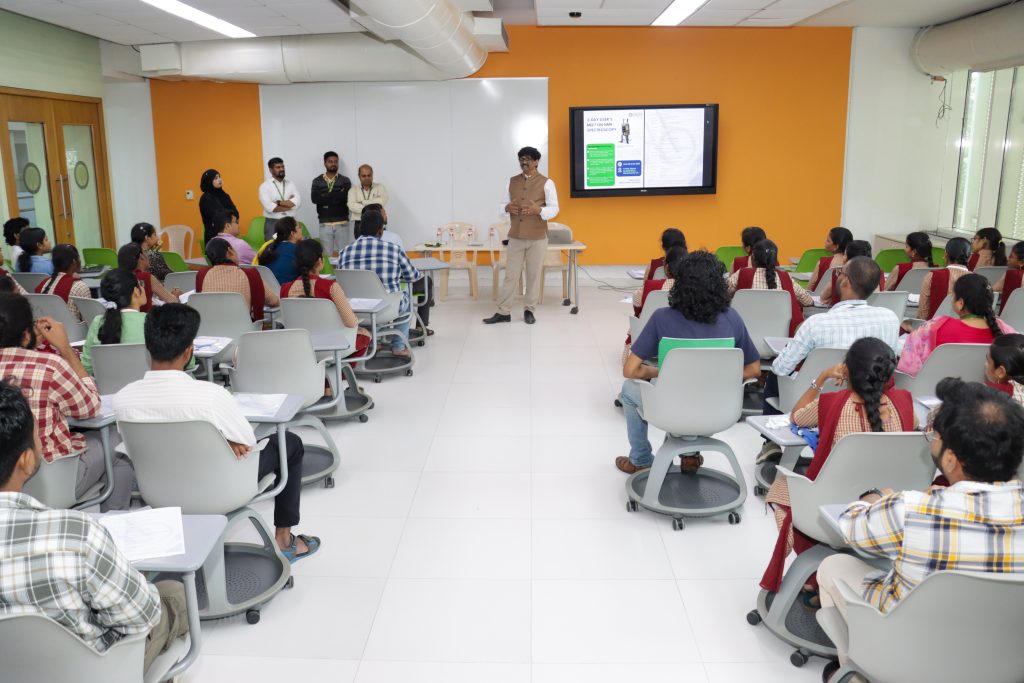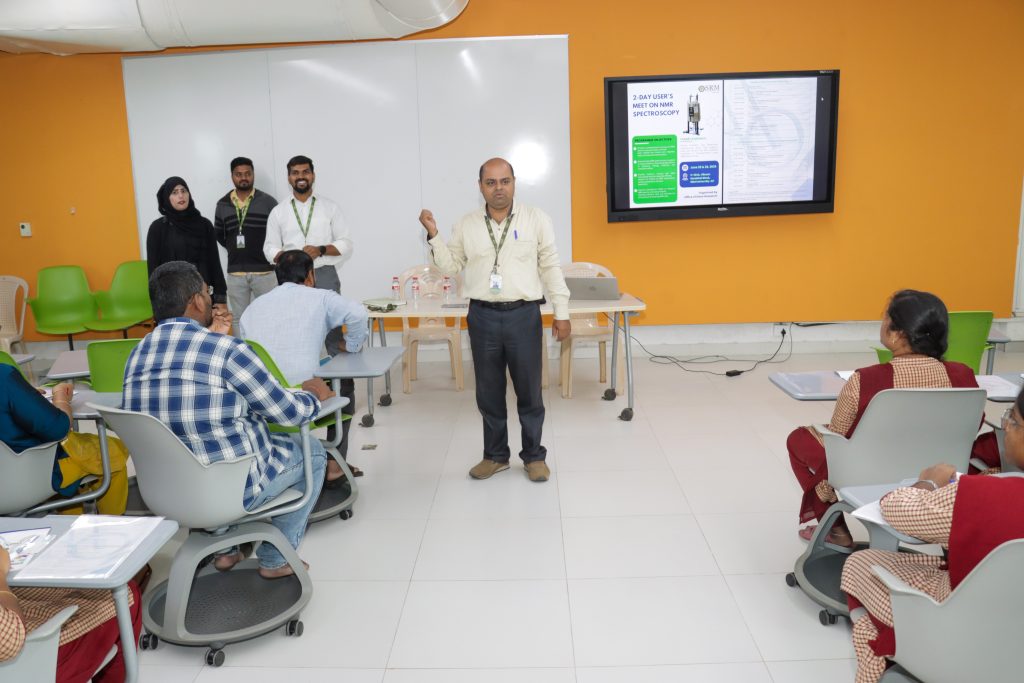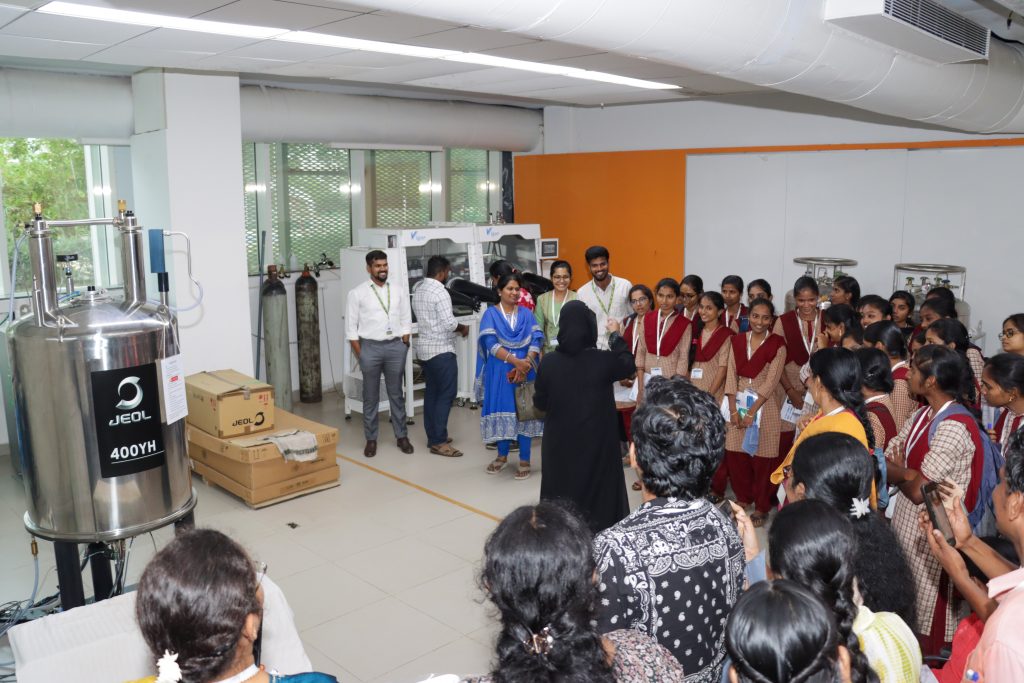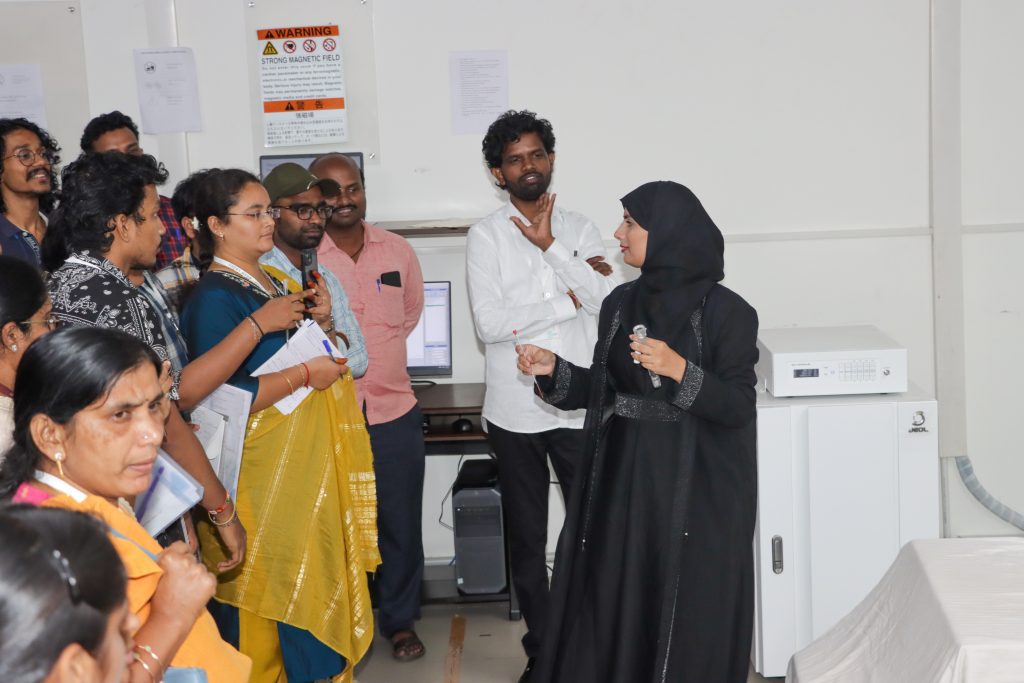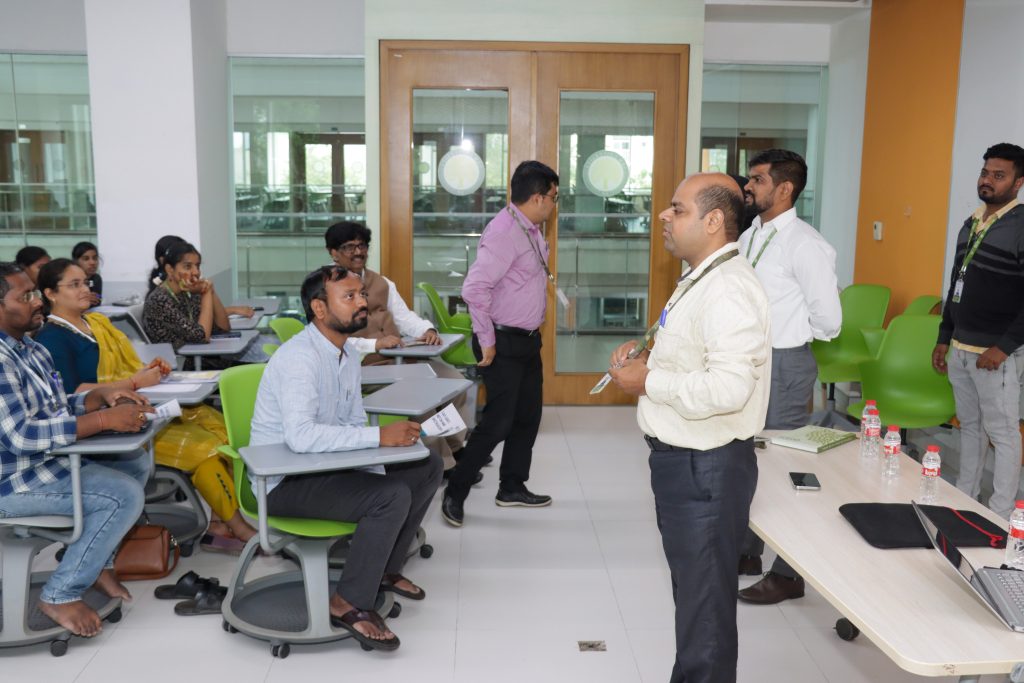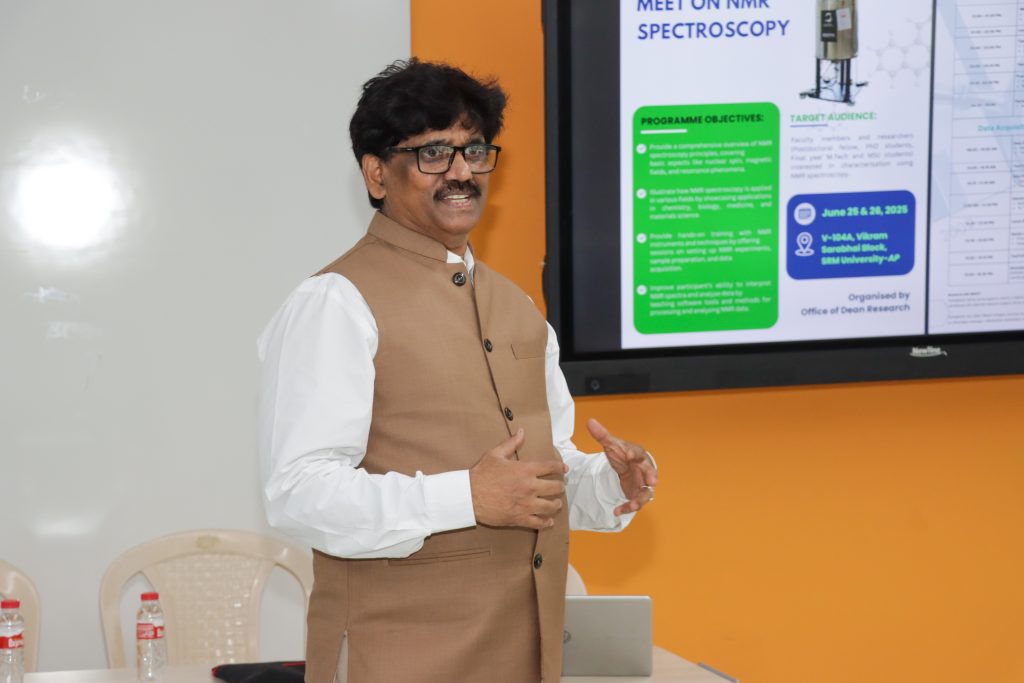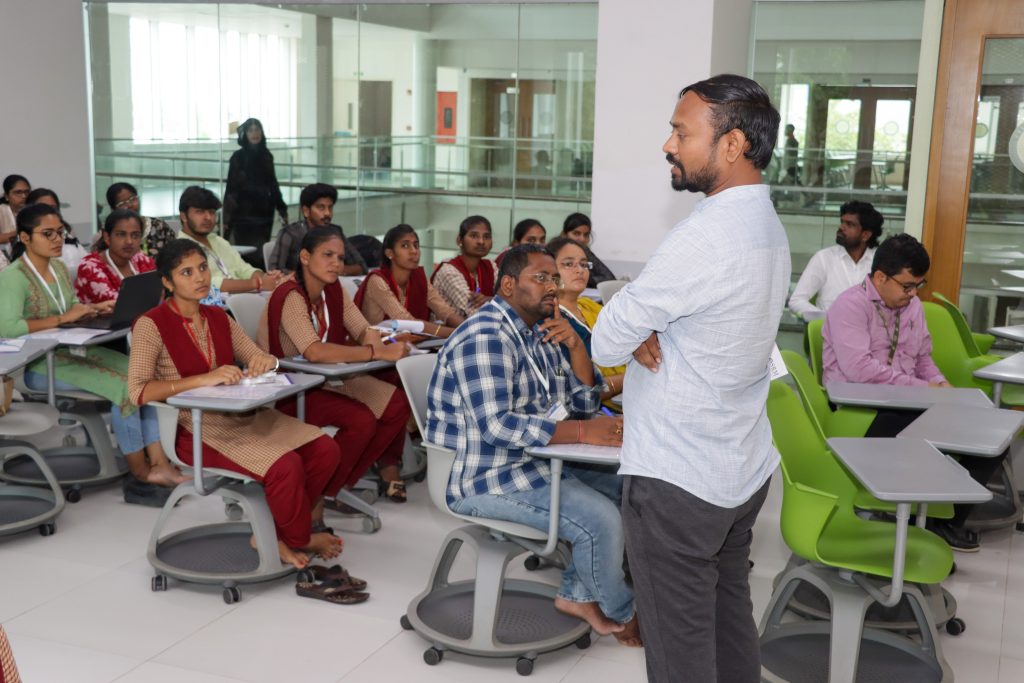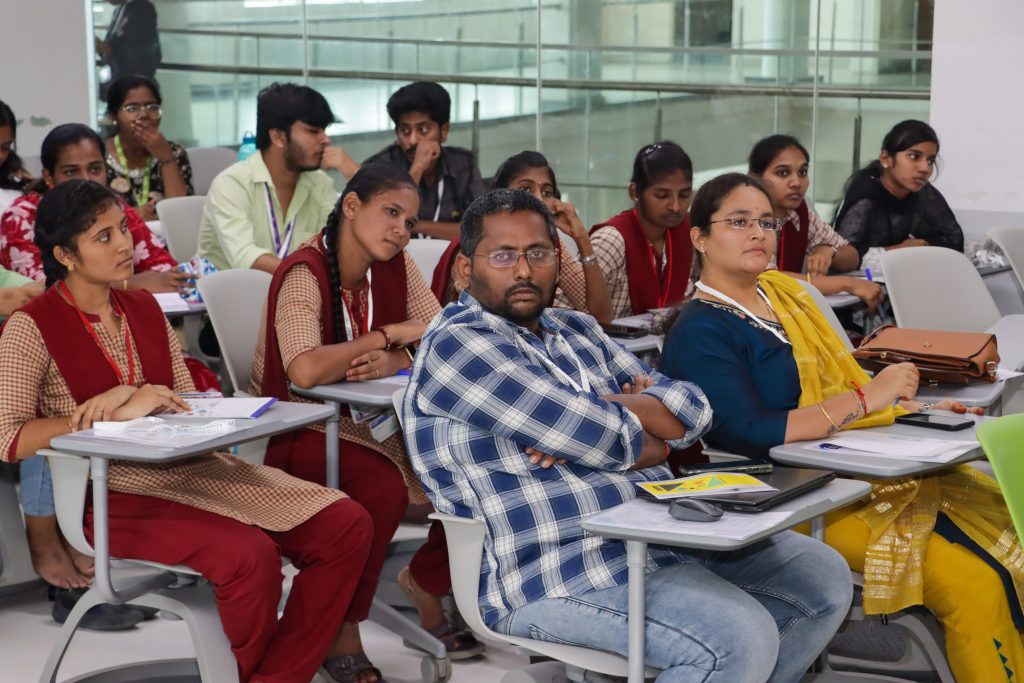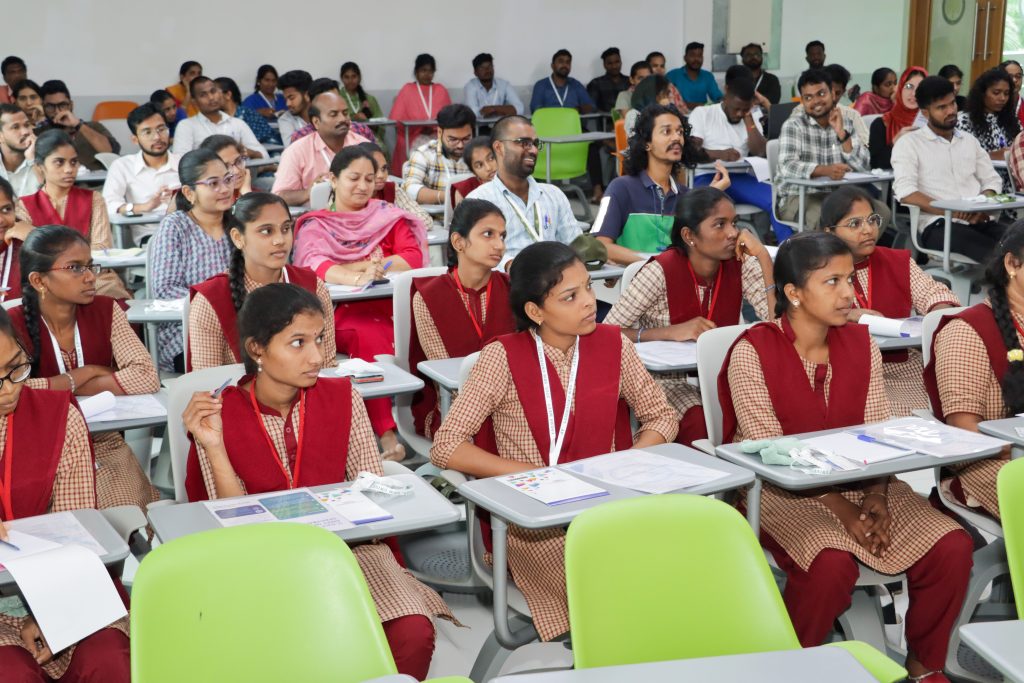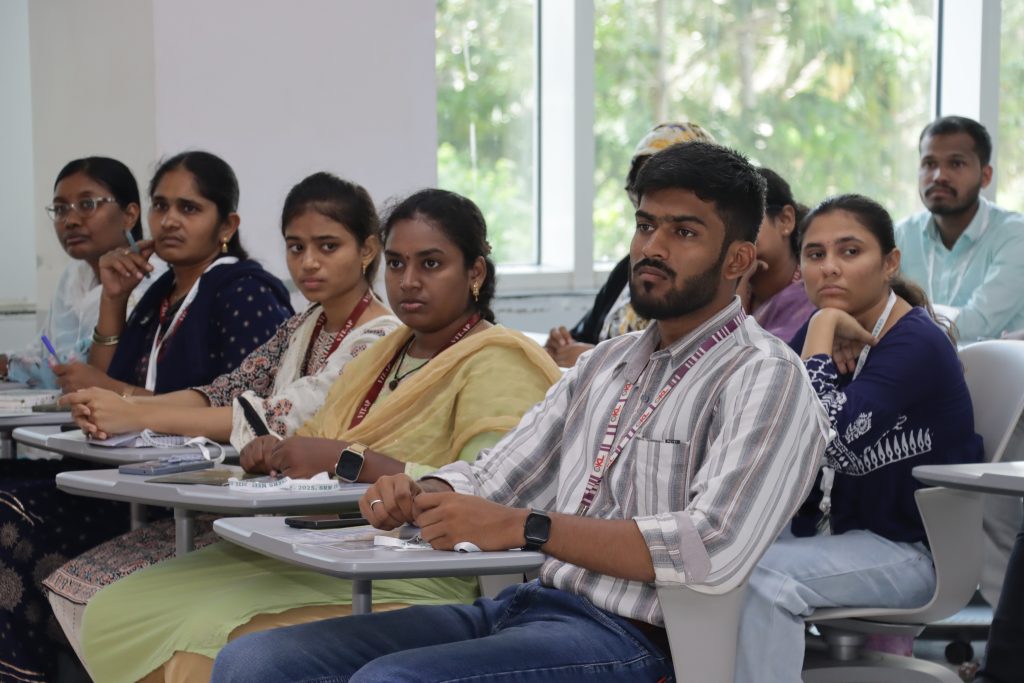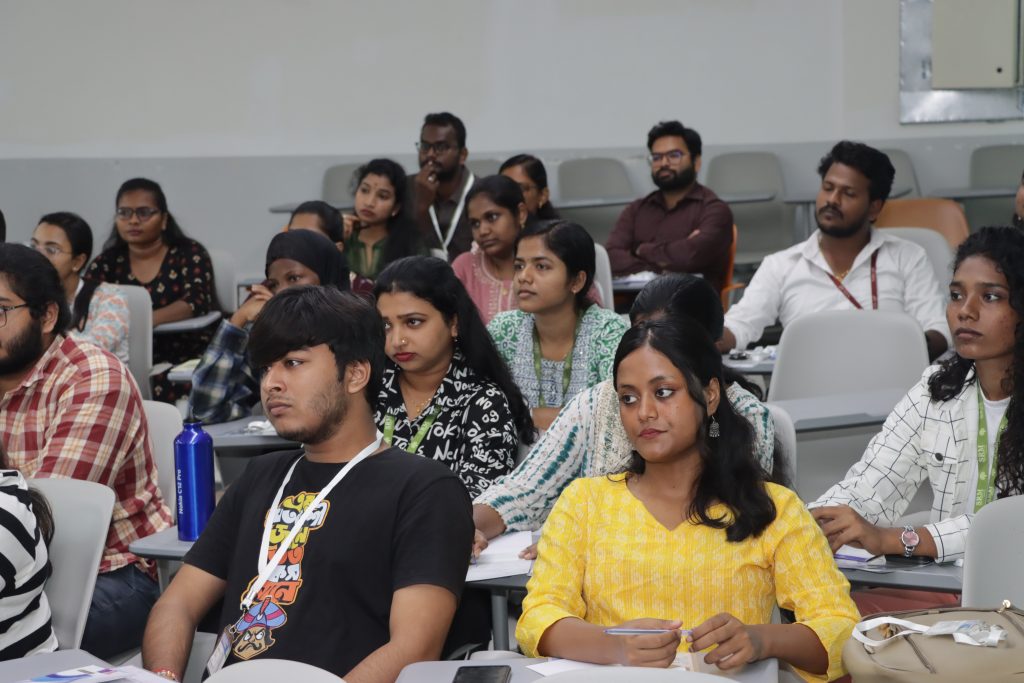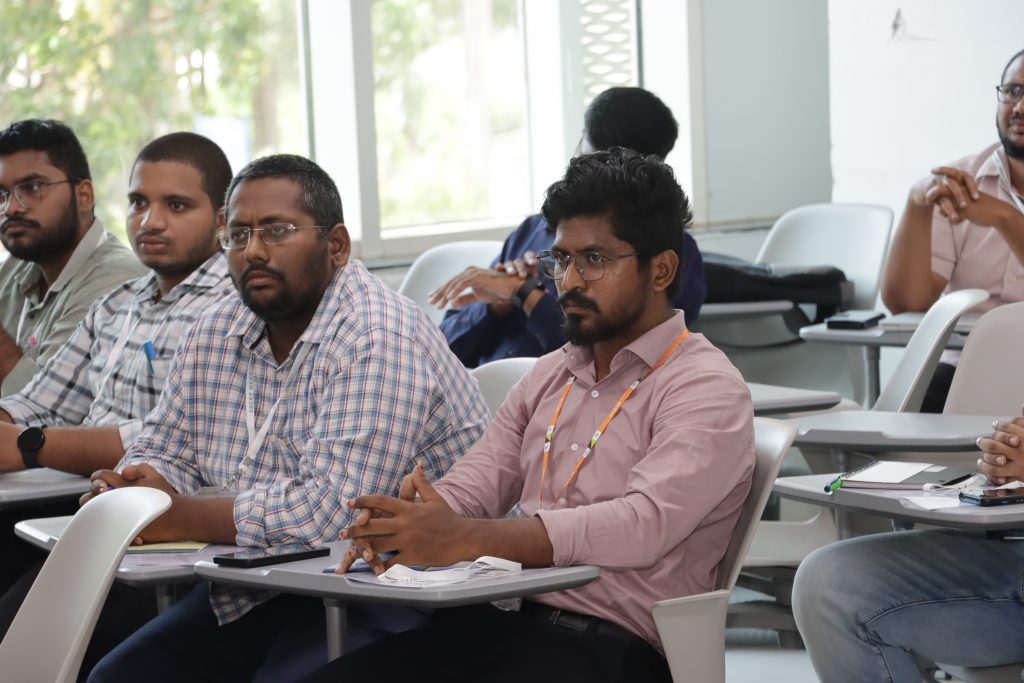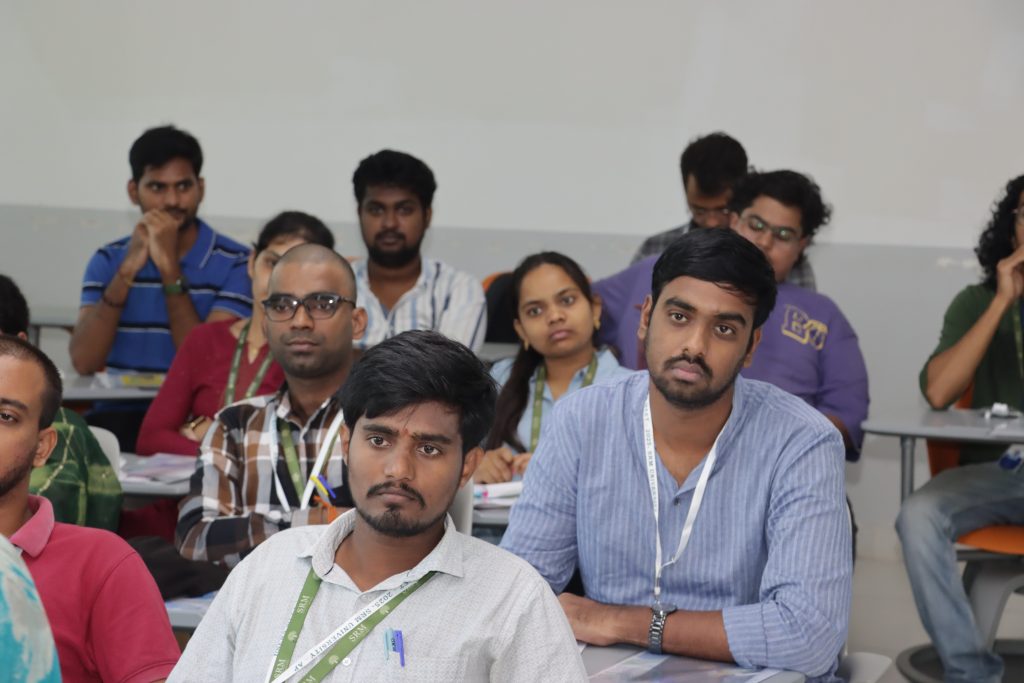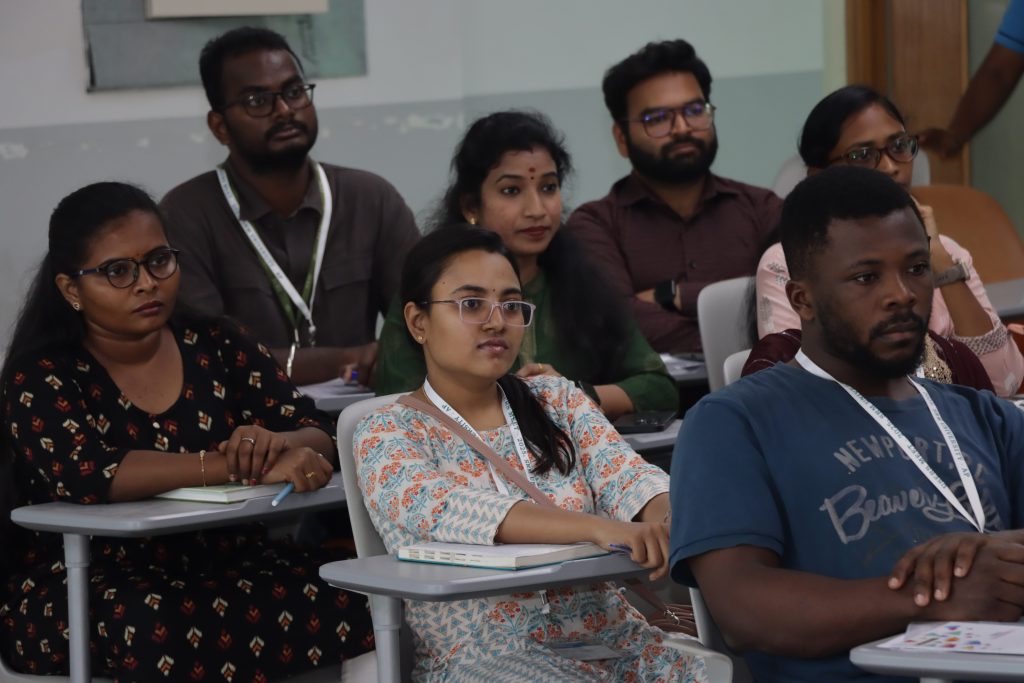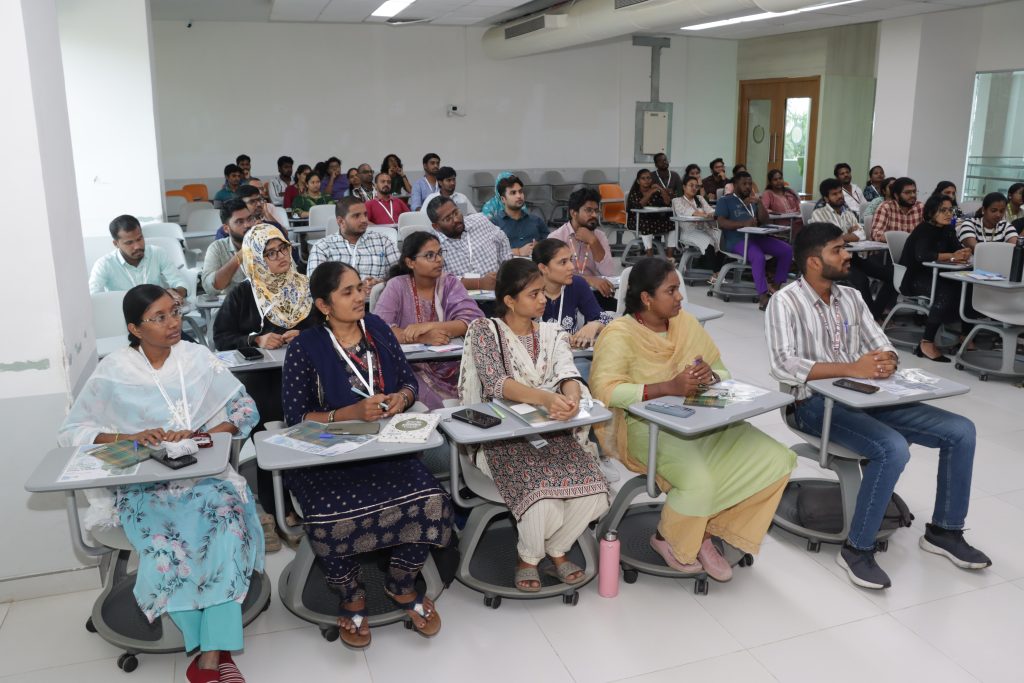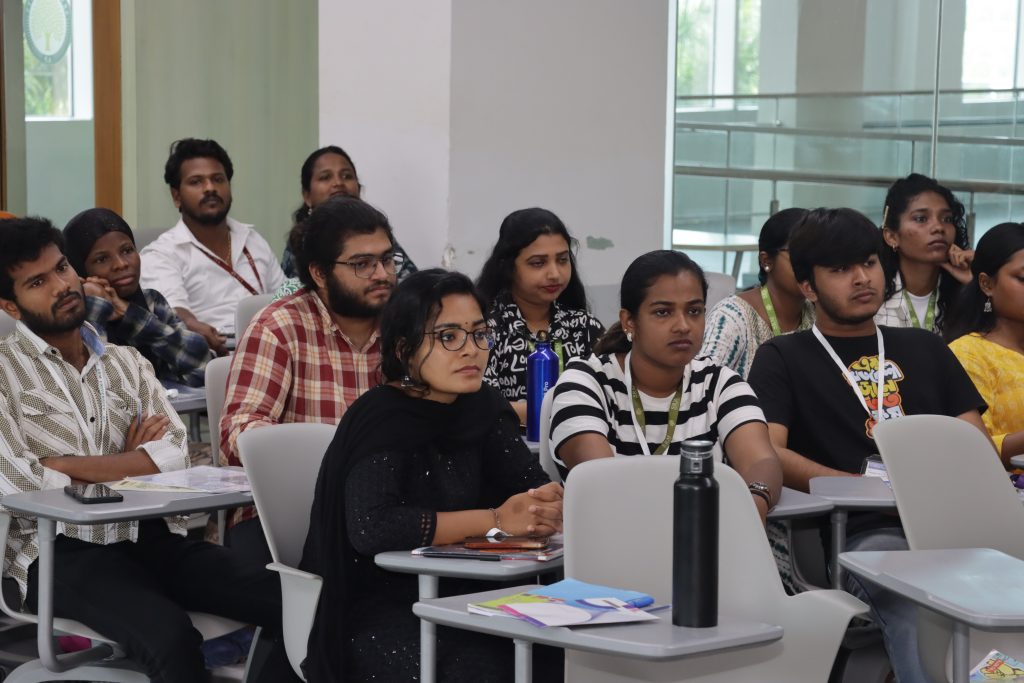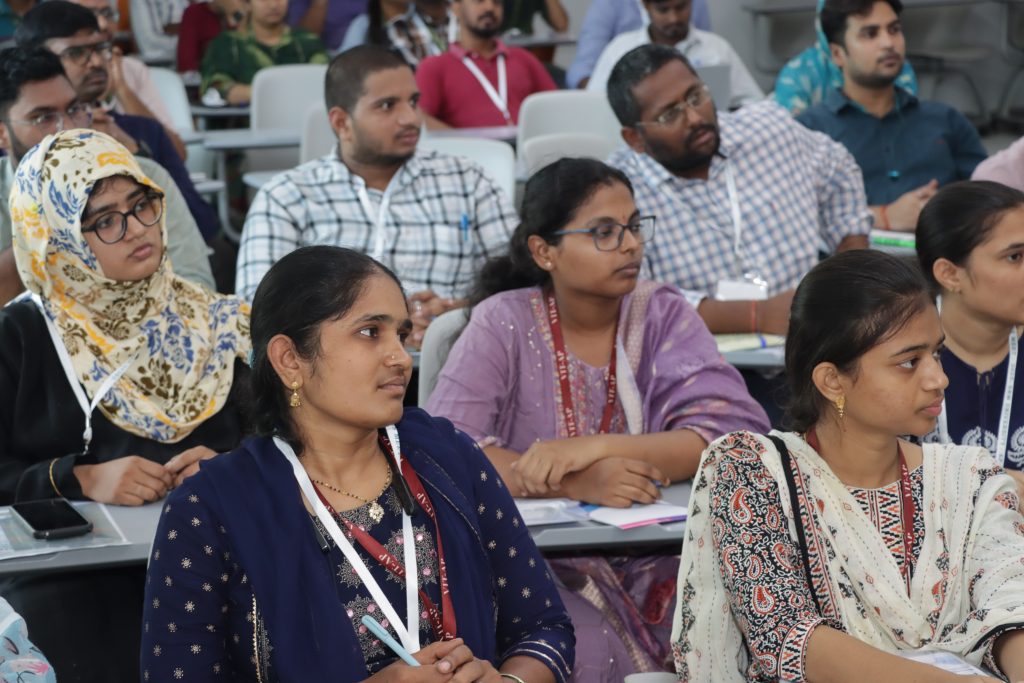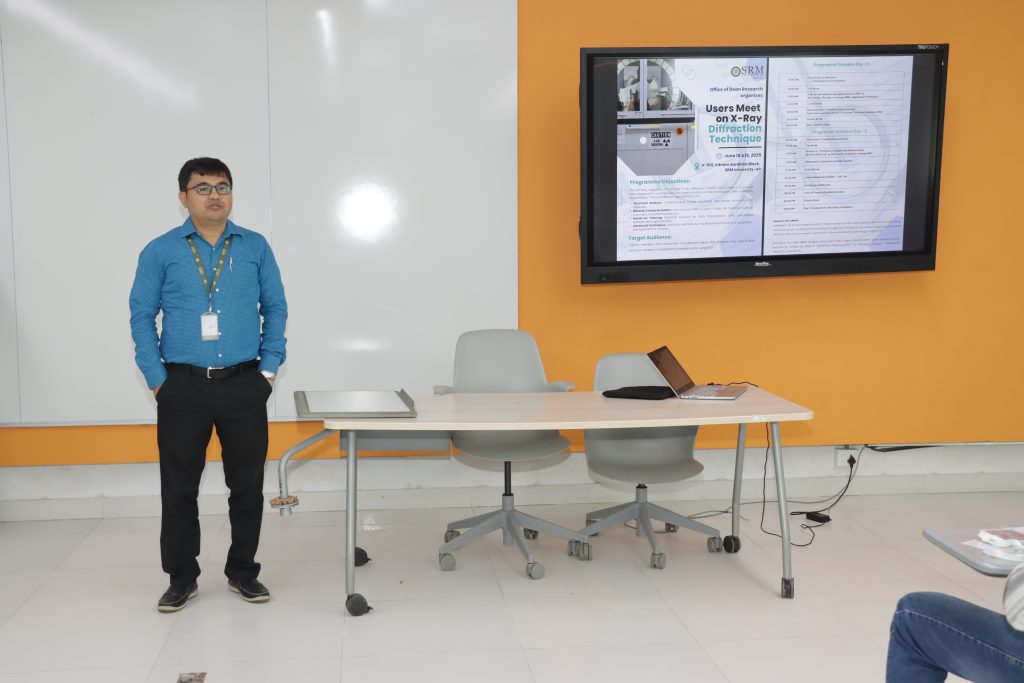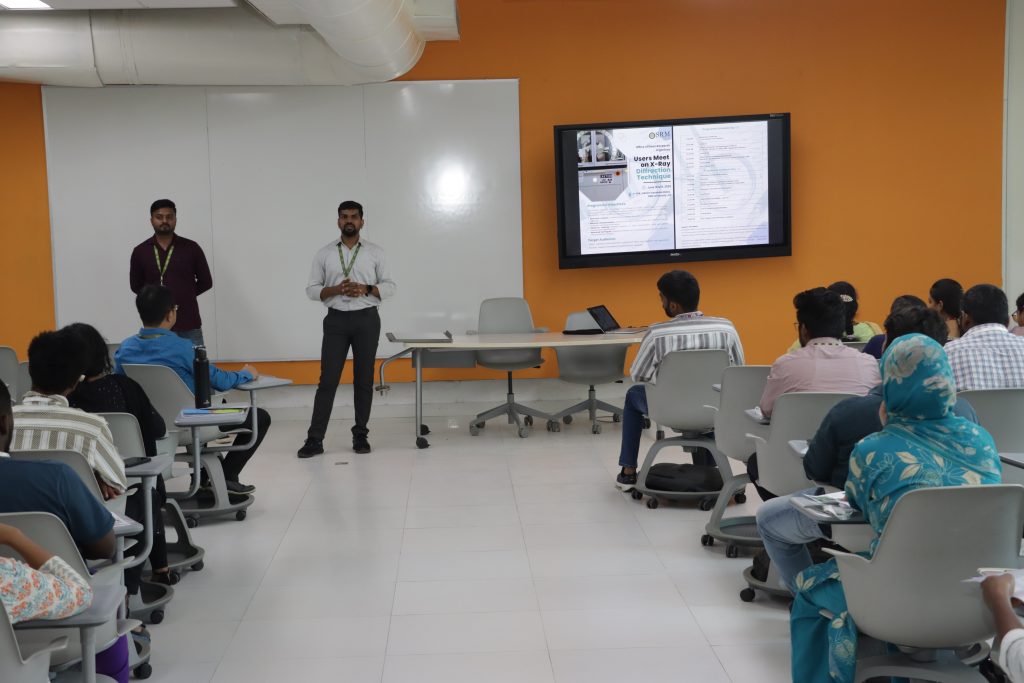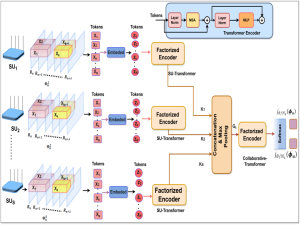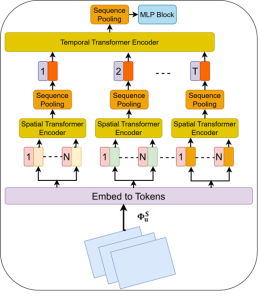Transforming Sustainability with Innovative Catalysts
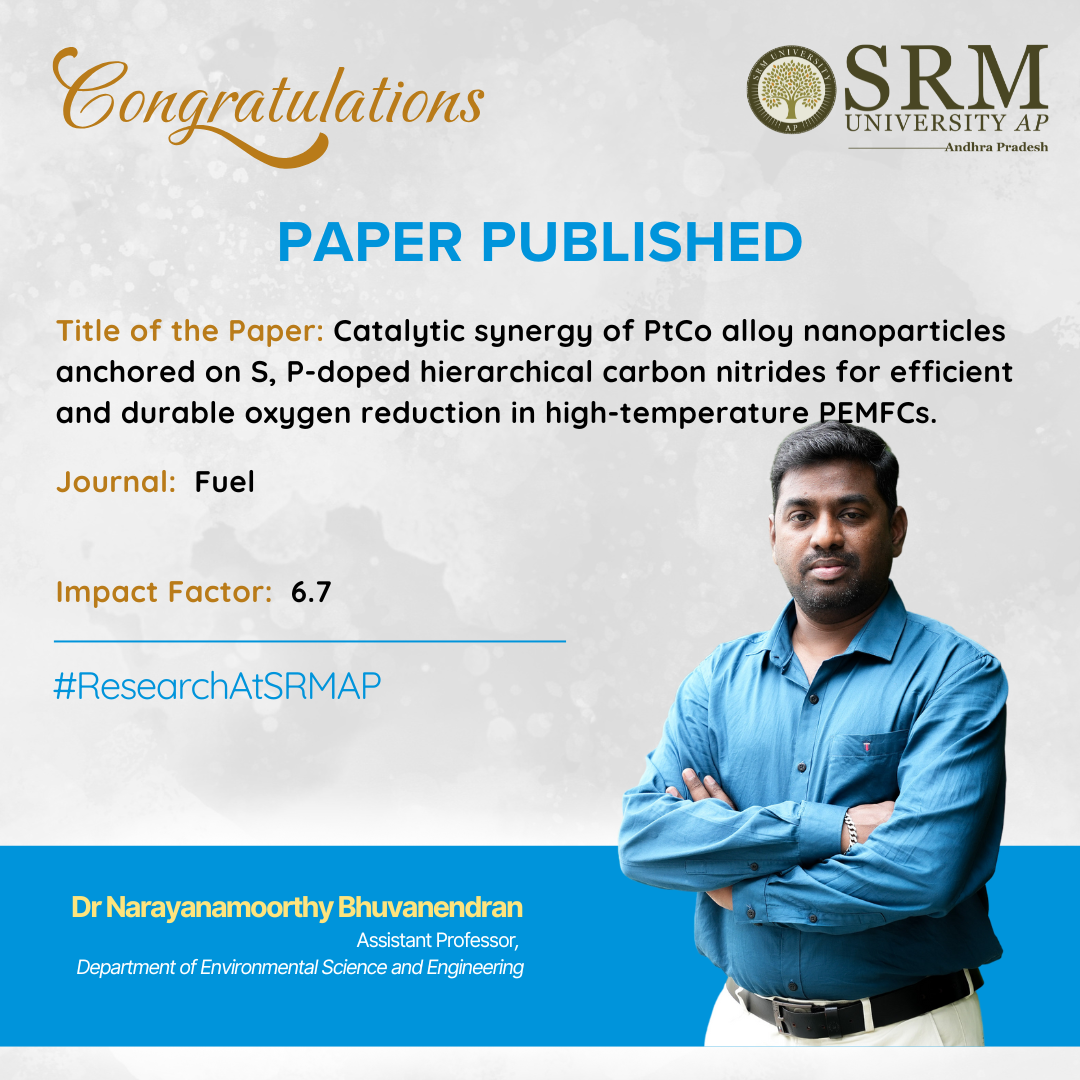 Assistant Professor, Dr Narayanamoorthy Bhuvanendran from the Department of Environmental Science and Engineering has published a research paper titled, Catalytic synergy of PtCo alloy nanoparticles anchored on S, P-doped hierarchical carbon nitrides for efficient and durable oxygen reduction in high-temperature PEMFCs. His research presents a new type of catalyst that could enhance the efficiency and longevity of fuel cells, making them more viable for sustainable energy applications.
Assistant Professor, Dr Narayanamoorthy Bhuvanendran from the Department of Environmental Science and Engineering has published a research paper titled, Catalytic synergy of PtCo alloy nanoparticles anchored on S, P-doped hierarchical carbon nitrides for efficient and durable oxygen reduction in high-temperature PEMFCs. His research presents a new type of catalyst that could enhance the efficiency and longevity of fuel cells, making them more viable for sustainable energy applications.
Abstract:
Intensified electrochemical corrosion under high-temperature and phosphoric acid conditions poses a significant challenge to the catalysts in high-temperature proton exchange membrane fuel cells (HT-PEMFCs). Herein, a S, P-doped hierarchical porous carbon nitride (S, P-HCN) supported PtCo alloy catalyst was developed to address this issue. The multilayered porous structure of S, P-HCN ensures high metal dispersion, a large specific surface area, and enhanced mass transfer. The PtCo/S, P-HCN catalyst exhibits remarkable performance, with specific activity (1.27 mA cmPt-2 at 0.80 V), mass activity (0.51 mA µgPt-1 at 0.80 V), and electrochemical active surface area (ECSA) (39.9 m2 g-1Pt), surpassing commercial 20 % Pt/C by 2–3 times. Durability tests over 5000 potential cycles reveal excellent retention of mass activity (84 %) and specific activity (83.2 %) at 0.80 V, with only a minor 14 mV shift in half-wave potential. This enhancement stems from the synergistic effects between PtCo alloy nanoparticles and S, P-HCN, which modulate Pt- electronic structure, strengthen metal-support interactions, and boost catalytic efficiency. Single-cell HT-PEMFC studies demonstrate a peak power density of 377.4 mW cm−2 for PtCo/S, P-HCN, comparable to commercial Pt/C (398 mW cm−2), with reduced voltage degradation at low current densities. This work presents a promising approach for improving cathode materials and advancing HT-PEMFC performance.
Explanation in Research in Layperson’s Terms:
The growing demand for green energy has increased the interest in clean, sustainable, and efficient fuel for electricity generation. Hence, hydrogen is one of the promising choices as green energy source, which can be used as a fuel in fuel cell technology. Among various types of fuel cells, proton exchange membrane fuel cells (PEMFCs) are the fastest-growing energy technologies, especially in automotive applications, owing to their high-power density and rapid start-up and shutdown capabilities compared to other fuel cell types. PEMFCs are classified by operating temperature into low-temperature (LT-PEMFC) and high-temperature (HT-PEMFC). While LT-PEMFCs (operating at ∼ 80 °C) have advanced significantly, they face challenges such as complex heat and water management and the high cost of producing the required high-purity hydrogen fuel. HT-PEMFCs, operating at 150–200 °C, overcome low-temperature PEMFC limitations with fuel flexibility, simpler design, improved water management, and greater efficiency, while enhancing oxygen reduction reaction (ORR) kinetics and diffusion processes. Till to date, Pt/C is the most used catalyst in PEMFCs due to its high activity and stability. However, in HT-PEMFCs, phosphate species from the phosphoric acid electrolyte strongly adsorb onto Pt surfaces, blocking active sites for O2 adsorption and reducing overall cathode performance. To address this bottleneck issues, a novel hybrid support materials with 3D hierarchical porous morphology, high surface area, porosity, and more accessible active sites has been developed which provides distinct benefits over conventional carbon materials for enhancing ORR performance. Their extensive surface area and interconnected pores facilitate better active site distribution and efficient mass transfer during the ORR process and leads to extended fuel cell performance.
Practical Implementation and Social Implications:
In this work, we have design and developed the PtCo/S,P-HCN catalyst, through a simple hydrothermal process, constructs a synergistic combination of structural and compositional features that significantly enhance the cathodic ORR performance. The 3D porous architecture with uniformly distributed PtCo nanoparticles and S, P-doped carbon nitride matrix ensures improved Pt utilization, active site accessibility, and effective charge transport. Nitrogen doping (graphitic-N and pyridinic-N) facilitates efficient electron transfer, while heteroatom doping (S and P) optimizes *OOH binding energy, promoting oxygen adsorption and O–O bond cleavage. The interatomic alloy structure of PtCo modulates the Pt d-band center, further boosting ORR kinetics. These combined effects result in superior catalytic activity (SA: 1.268 mA cmPt-2, MA: 0.506 mA µgPt-1, ECSA: 39.9 m2 g-1Pt) and durability, retaining 84 % MA and 83.2 % SA after 5000 cycles with minimal half-wave potential loss (14 mV). In HT-PEMFC tests, it achieved a peak power density of 377.4 mW cm−2, matching commercial Pt/C (398 mW cm−2), while demonstrating greater PA resistance and stability. These findings highlight the synergistic effects of the PtCo/S,P-HCN catalyst and its potential as a robust ORR electrocatalyst for HT-PEMFC applications.
Collaborations:
Prof. Huaneng Su, Jiangsu University, China.
Future Research Plans:
Based on the observations from the above research, we plan to further explore modifications to the electronic properties of the catalyst to enhance the surface adsorption of reaction intermediates, thereby improving its electrocatalytic performance for various key electrochemical reactions.
- Published in Departmental News, ENVS News, News, Research News
Dr Pradhan and Team’s Breakthrough in Post-Stroke Rehabilitation
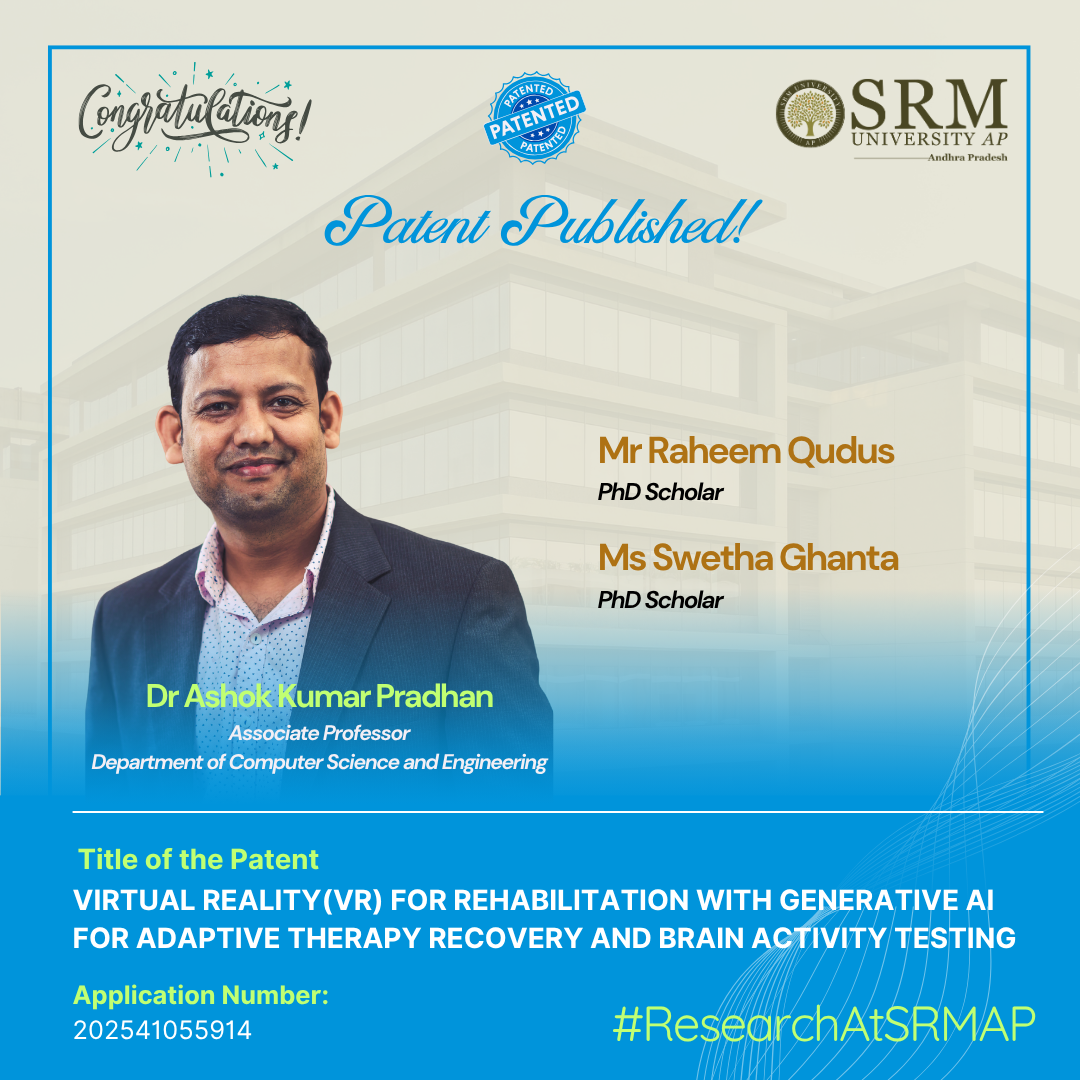 The Department of Computer Science and Engineering at SRM University-AP has yet again produced a scientific breakthrough. Associate Professor Dr Ashok Kumar Pradhan, along with his research scholars Mr Raheem Qudus and Ms Swetha Ghanta, published a patent on post-stroke rehabilitation using Virtual Reality and Artificial Intelligence.
The Department of Computer Science and Engineering at SRM University-AP has yet again produced a scientific breakthrough. Associate Professor Dr Ashok Kumar Pradhan, along with his research scholars Mr Raheem Qudus and Ms Swetha Ghanta, published a patent on post-stroke rehabilitation using Virtual Reality and Artificial Intelligence.
Brief Abstract of the Research
Stroke is one of the most significant health problems that aid disability and mortality in functionality of human health, While already there are varies approach, Traditionally and Technical methods developed to help patient overcome these challenges, common system to treat and help patients recovers from this are, using Local therapy approach, using EEG (electroencephalogram) and or using the BCI (Brain Computer Interface). However, not all patients find this approach applicable, suitable and affordable. The aim of this research is to perform Post-Stroke Rehabilitation recovery training and testing on patient without the need for Brain computer Interface (BCI) and Electroencephalogram (EEG), our proposed method provides similar embodiment and rehabilitation capabilities to those perceived from existing therapeutic techniques such as Constraint induced movement therapy (CIMT), Occupational therapy, mirror therapy and authenticating fear. Our Research approach resolution is to develop a virtual reality (VR) based system for post-stroke rehabilitation using Meta Quest (Headset) and Unity game engine for simulation of the virtual environment. Our emerging methods in integrating Generative-AI to provide adaptive therapy recommendations based on patient movements and engagement levels. While we implement the use of a real-time compensatory movement detection system without EEG, relying on AI-driven motion analysis.
Explanation in layperson’s terms:
After a stroke, patients often struggle to regain movement or perform simple tasks. Existing treatments rely on traditional and invasive signal equipment, such as wearing of electroencephalogram(EEG), and also require a professional expert to track and interpret the progress of the patient, while relying on real-world objects. Our invention solves those existing limitations through the integration of Virtual Reality (VR) and Artificial Intelligence (AI). We create a virtual world and object where stroke patients wear a VR headset and perform exercises in a simulated environment, while patients are able to feel a real-world immersive experience through movement practice, with a real-time communication guide of AI to aid users’ improvement.
Practical Implementation and Social Implications:
- Implementation: Clinics or homes can use our VR system to supplement therapy, reducing costs and therapist workload.
- Social Impact: Makes rehab accessible to low-income patients, avoids the stigma of bulky medical devices, and could reduce global stroke-related disability burdens.
- Accessible Therapy: Makes rehabilitation possible from home, especially in rural areas or underserved communities.
- Personalised Healing: The AI ensures therapy matches the patient’s ability in real time by providing real-time support during the session.
- Mental Health & Cognitive Benefit: Helps with memory, attention, and mood rehabilitation using immersive tasks.
Collaborations:
SRM University-AP, Amaravati (Assignee)
Future Research Plans:
- Expand the discovery into an adaptation framework for elderly care, PTSD treatment, and education for neurodivergent learners.
- Pilot clinical testing with actual stroke patients in collaboration with hospitals.
- Expand the system to support speech therapy and cognitive recovery tools.
- Integrating an AI-Agent for real-time Non-player character medical support during the immersive session.
- Published in CSE NEWS, Departmental News, News, Research News
Workshop on NMR Spectroscopy
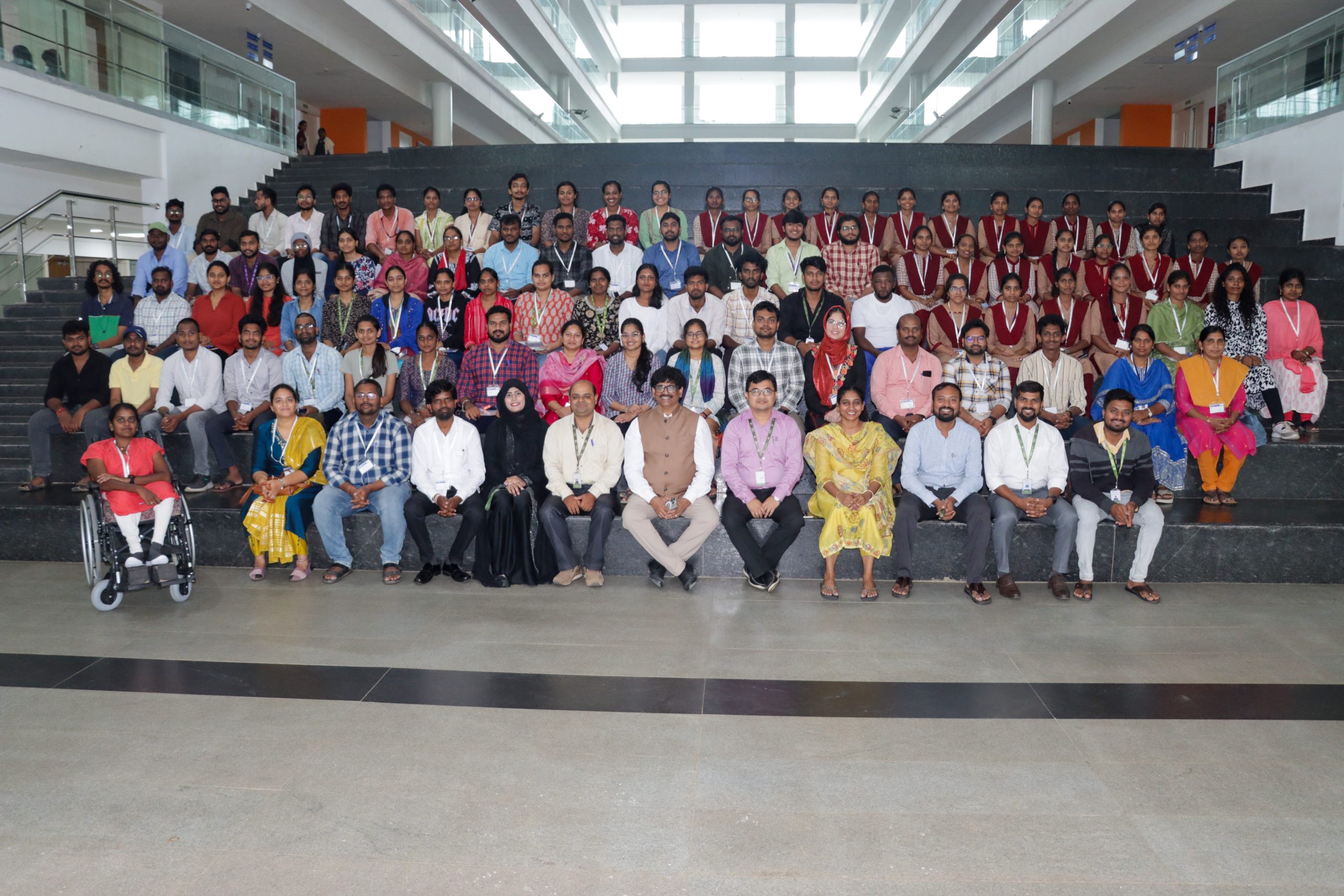 A two-day hands-on training for about 110 to 113 attendees, including undergraduate, postgraduate and PhD Scholars, was conducted by the Office of Dean Research. The Users Meet on NMR Spectroscopy was primarily aimed at:
A two-day hands-on training for about 110 to 113 attendees, including undergraduate, postgraduate and PhD Scholars, was conducted by the Office of Dean Research. The Users Meet on NMR Spectroscopy was primarily aimed at:
- Enhancing participants’ conceptual and practical understanding of advanced spectroscopic techniques used in the structural elucidation of chemical compounds.
- Demonstrate the application of 1D and 2D NMR techniques in organic, inorganic, and biological systems.
- Promote hands-on exposure to modern NMR instruments, emphasising sample preparation, data acquisition, and spectral interpretation.
- Facilitate interactions between participants and domain experts to encourage academic collaboration and knowledge exchange.
- Strengthen the institutional vision of supporting multidisciplinary research through access to cutting-edge scientific infrastructure.
The event saw the presence of dignitaries like Prof. Ch. Sathish Kumar, Pro Vice-Chancellor; Prof. Ranjit Thapa, Dean of Research; Dr Paradha Saradhi Maram, Associate Professor and Head; and Dr Sabyasachi Mukhopadhyay, Associate Professor, among others.
The workshop held multiple sessions, including theoretical sessions, practical sessions, and interactive sessions. In the theoretical session, Dr Ramaraju Korivi explained the principles of NMR Spectroscopy. he also covered an instrumentation overview and data interpretation techniques. The session was further enriched by Mr Sakthi Ganapathi R, a PhD scholar. The interactive session saw Mr Arun Kumar Bandarapu enhancing the understanding of advanced characterisation techniques beyond NMR, including SEM, XPS, TEM, EPR, and more. The hands-on session was meticulously coordinated by Ms. Afreen Shaik, Dr. Ramaraju Korivi, and Mr. Sakthi Ganapathi R, providing participants with immersive, real-time exposure to the operational aspects of NMR spectroscopy
Beyond the three sessions, the workshop also included a session on sample analysis and an I-STEM. Together, the two-day workshop proved to be an enriching and skill-building platform for the students.
- Published in Departmental News, News, Research News, Uncategorized
Ensuring Food Safety through Artificial Intelligence
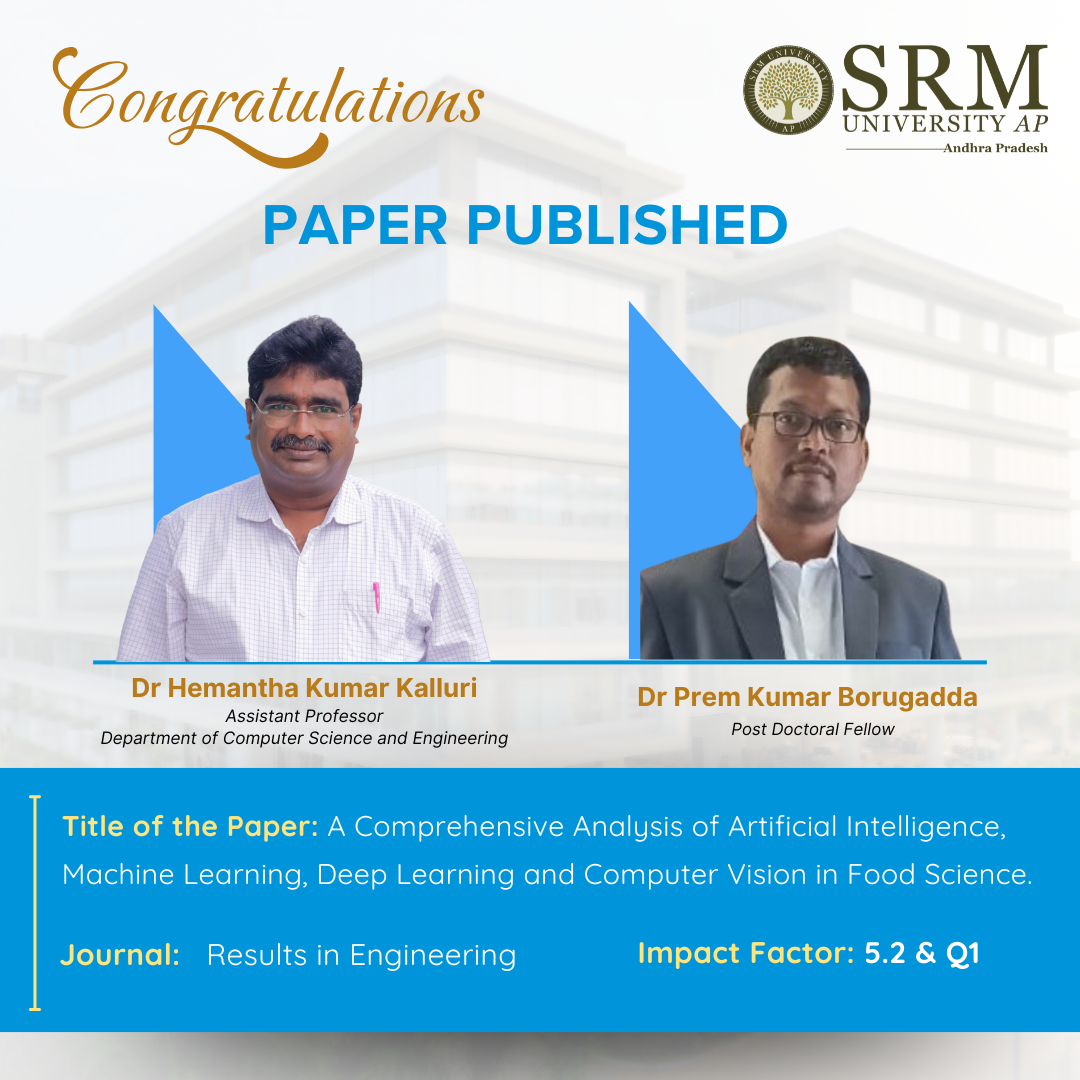 Assistant Professor Dr Hemantha Kumar Kalluri from the Department of Computer Science and Engineering and post-doctoral fellow, Dr Premkumar Borugadda have published a research paper titled, A Comprehensive Analysis of Artificial Intelligence, Machine Learning, Deep Learning and Computer Vision in Food Science. This significant research explores how Artificial Intelligence (AI), Machine Learning (ML), Deep Learning (DL), and Computer Vision (CV) are making food processing smarter and more reliable.
Assistant Professor Dr Hemantha Kumar Kalluri from the Department of Computer Science and Engineering and post-doctoral fellow, Dr Premkumar Borugadda have published a research paper titled, A Comprehensive Analysis of Artificial Intelligence, Machine Learning, Deep Learning and Computer Vision in Food Science. This significant research explores how Artificial Intelligence (AI), Machine Learning (ML), Deep Learning (DL), and Computer Vision (CV) are making food processing smarter and more reliable.
Here’s a brief on their findings and the social and practical implementations of their work.
A Brief Abstract
Providing safe and quality food is crucial for every household and is of extreme significance in the growth of any society. It is a complex procedure that deals with all issues focusing on the development of food processing from seed to harvest, storage, preparation, and consumption. This current paper seeks to demystify the importance of Artificial Intelligence (AI), Machine Learning (ML), Deep Learning (DL), and Computer Vision (CV) in ensuring food safety and quality. By stressing the importance of these technologies, the audience will feel reassured and confident in their potential. These are very handy for such problems, giving assurance over food safety. CV is incredibly noble in today’s generation because it improves food processing quality and positively impacts firms and researchers. Thus, at the present production stage, rich in image processing and computer visioning is incorporated into all facets of food production. In this field, DL and ML are implemented to identify the type of food in addition to quality. Concerning data and result-oriented perceptions, one has found similarities regarding various approaches. As a result, the findings of this study will be helpful for scholars looking for a proper approach to identify the quality of food offered. It helps to indicate which food products have been discussed by other scholars and lets the reader know papers by other scholars inclined to research further. Also, deep learning is accurately integrated with identifying the quality and safety of foods in the market. This paper describes the current practices and concerns of ML, DL, and probable trends for its future development.
Explanation of the Research in Layperson’s Terms
The research explores how Artificial Intelligence (AI), Machine Learning (ML), Deep Learning (DL), and Computer Vision (CV) are making food processing smarter and more reliable.
AI and ML in Food Processing
- AI-powered systems can predict food spoilage, detect harmful contaminants, and ensure food is stored at the right temperature.
- ML models learn from past data to improve food quality, making processing more efficient and reducing waste.
Computer Vision (CV) for Food Inspection
- Cameras powered by AI can analyse food products and detect defects, ensuring only high-quality food reaches consumers.
- CV helps in sorting fruits and vegetables based on size, colour, and ripeness, reducing human error and speeding up production.
- It is also used to check food packaging for defects and prevent contamination.
Deep Learning for Better Food Safety
- Deep learning, a more advanced type of AI, helps identify patterns in food quality data.
- It is used to detect food adulteration (unwanted substances added to food), ensuring that the food we consume is pure and safe.
- DL models can also classify different types of food and analyse their nutritional content.
Future of Smart Food Processing
- As AI and ML continue to evolve, food production will become more automated, reducing human labour while increasing efficiency.
- These technologies will help minimise food waste, improve supply chains, and provide personalised nutrition recommendations.
- By integrating AI with real-time monitoring, food safety can be ensured on a global scale.
Practical Implementation and Social Implications
The research on Artificial Intelligence (AI), Machine Learning (ML), Deep Learning (DL), and Computer Vision (CV) in Food Science has significant real-world applications and social implications:
Practical Implementation
Our research has directed the researchers to develop applications in various stages of the food industry, from agriculture to food processing, quality control, and distribution. Here are some key practical implementations:
- Smart Food Inspection and Quality Control
1.1 Computer Vision (CV) & Deep Learning (DL) for Defect Detection
- AI-powered cameras can detect defects in fruits, vegetables, and packaged food (e.g., detecting bruises in apples and sorting out contaminated grains).
- AI enhances automated food grading and sorting, reducing human error.
1.2 AI for Food Adulteration Detection
- AI models analyse food samples for contaminants, chemical adulterants, and spoilage (e.g., identifying milk adulteration using spectral data).
- Deep learning algorithms predict shelf life based on packaging conditions.
2. AI in Food Safety and Hygiene Monitoring
2.1 AI-based Sensors for Real-time Food Safety Checks
- AI-driven sensors monitor temperature, humidity, and hygiene conditions in food storage units and supermarkets.
- ML-based forecasting predicts food spoilage before it happens, reducing foodborne diseases.
This research bridges the gap between technology and food security, ensuring that AI and ML can revolutionise the way food is produced, processed, and consumed. These technologies enhance quality control, reduce food waste, ensure hygiene, and support sustainable agriculture, leading to a healthier, safer, and more efficient global food system.
Future Research Plans.
AI-Powered Automated Food Sorting & Grading
- Use Computer Vision & Deep Learning to automate sorting of grains, fruits, and vegetables based on size, ripeness, and defects.
- Implement Deep Learning models for real-time sorting in food processing units.
- Published in CSE NEWS, Departmental News, News, Research News
Dr Sayantan Decodes Gender Paradox in Bāul Philosophy
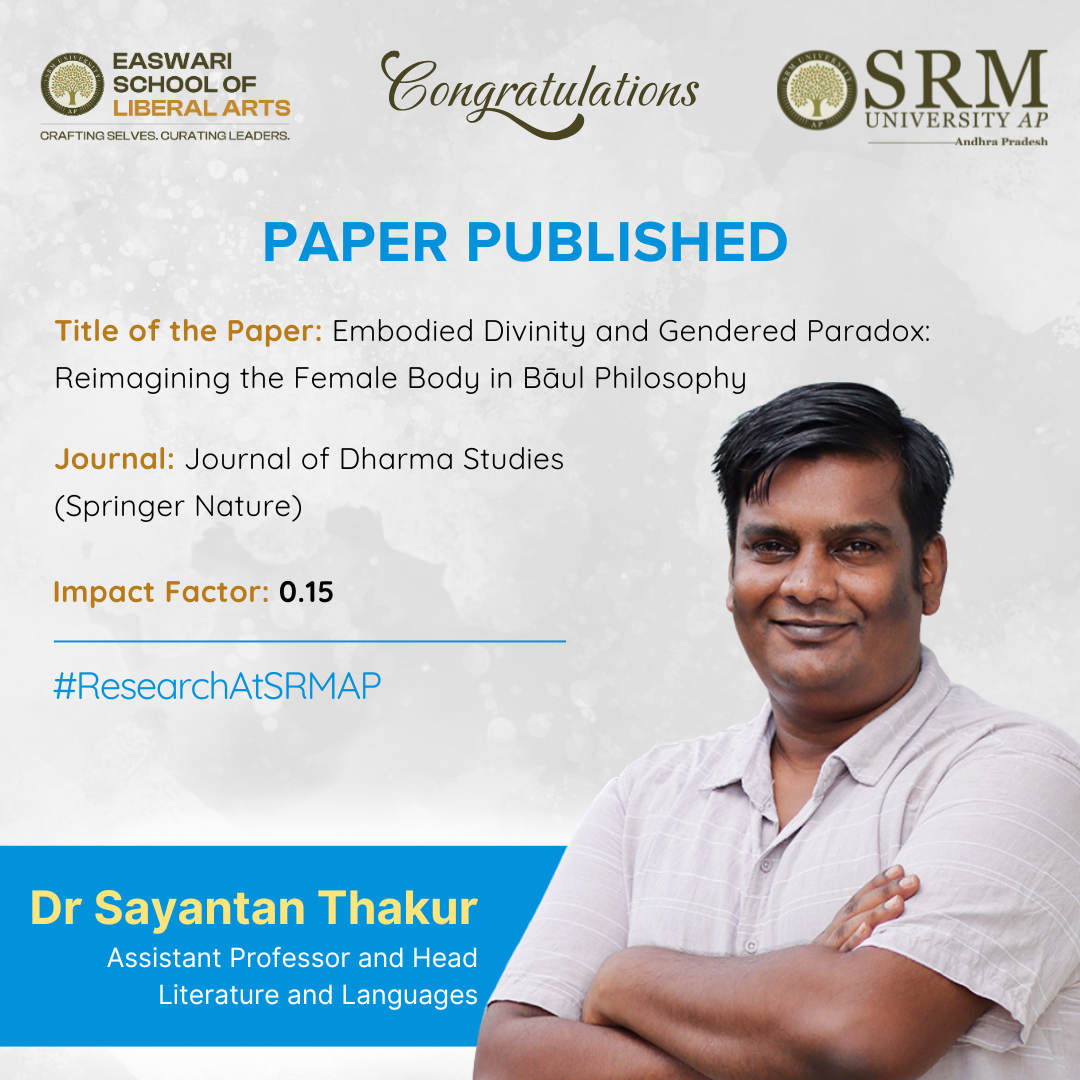 Dr Syantan Thakur, Assistant Professor at the Department of Literature and Languages in the Easwari School of Liberal Arts, analyses the Bāull Philosophy through its stories and songs, which project women as a vessel for spiritual realisation and at the same time subject her individuality so as to idealise patriarchal norms. Read the interesting excerpt about his paper to learn more about the topic.
Dr Syantan Thakur, Assistant Professor at the Department of Literature and Languages in the Easwari School of Liberal Arts, analyses the Bāull Philosophy through its stories and songs, which project women as a vessel for spiritual realisation and at the same time subject her individuality so as to idealise patriarchal norms. Read the interesting excerpt about his paper to learn more about the topic.
A Brief Abstract of the Research
This research explores how the Bāul tradition of Bengal represents the female body within its mystical and countercultural spiritual philosophy. Central to Bāul belief is deho-tattva—the philosophy that the human body, especially the female body, is the vessel through which spiritual realization is possible. The paper critically examines how women’s bodies are portrayed as sites of divine power (śakti) but are simultaneously idealized in ways that risk reinforcing patriarchal structures. By drawing on feminist theorists like Simone de Beauvoir, Judith Butler, Luce Irigaray, and Rita Gross, the study interrogates whether the Bāul tradition’s symbolic reverence of women genuinely affirms women’s agency or instead reduces them to metaphors for male spiritual advancement. Using Bengali Bāul songs, ethnographic insights, and comparative references to other South Asian mystical traditions, this research argues that the Bāul approach embodies both liberatory and constraining elements for women. The paper calls for an intersectional feminist lens to reconcile these contradictions and to imagine a spiritual practice that fully recognizes the lived experiences and autonomous subjectivity of women within the Bāul cosmos.
Explanation of the Research in Layperson’s Terms
This study looks at a group of mystical singers and spiritual practitioners in Bengal called the Bāuls. They believe that the human body, especially a woman’s body, is sacred and full of divine power. Unlike some other religious traditions that say we should reject the body to find God, the Bāuls say we should honor the body because it connects us to the divine. However, there’s a twist: while the Bāuls praise women’s bodies as powerful and holy, they often do this in ways that turn real women into symbols instead of seeing them as people with their own voices and choices. My research asks: does calling a woman “divine” really help her in everyday life, or does it just make her part of someone else’s story? By studying Bāul songs and talking about feminist ideas, my work tries to show both sides of this spiritual practice—how it can free women from some social limits but also how it might quietly keep old inequalities alive. In the end, it’s about finding a fair balance between spiritual ideas and real-life respect for women
Practical Implementation and Social Implications
This research has important implications for how we think about gender, religion, and cultural traditions today. First, it encourages scholars, artists, and spiritual communities to look critically at how women are represented—not just as sacred symbols but as real people with voices and choices. For Bāul practitioners and followers, the study invites reflection on how to preserve the liberating parts of their tradition while addressing parts that may still reflect patriarchal ideas. Socially, the paper highlights the need for conversations about how spirituality and feminism can work together, especially in India where women often face both religious and cultural restrictions. By showing how the Bāuls both challenge and sometimes uphold old gender roles, this research can help communities, policymakers, and educators find better ways to support women’s rights within cultural practices. Practically, it suggests that empowering female Bāuls—called Bāulinīs—to share their own stories, perform publicly, and teach in their own voices can shift the tradition toward greater gender equality. Overall, this study shows that spiritual traditions can be part of modern conversations about gender justice if we approach them with openness, respect, and critical thinking.
Future Research Plans
- Regional Literature in Translation
- Tantric Tradition and Eastern Indian Literature
- Folk Music of Bengal
- Indian Philosophy, Aesthetics & Literature
- Published in Departmental News, English Current Happenings, English news, News, Research News
Office of Dean Research Organises Two-Day Workshop on X-ray Diffraction Techniques
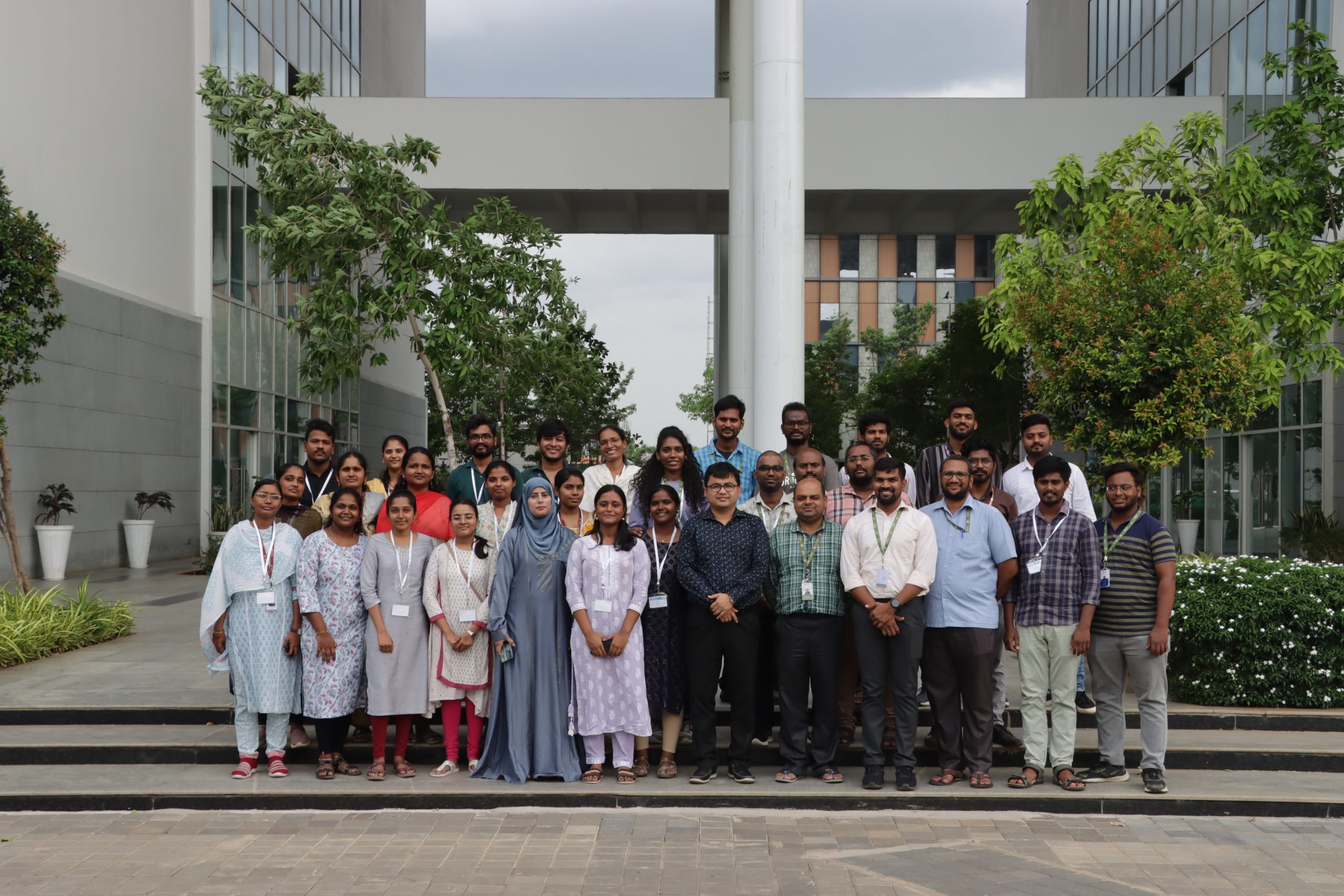 The Office of the Dean-Research organised a two-day meet on X-ray Diffraction Technique. The hands-on workshop was led by Prof. L N Patro, Mr Arun Kumar Bandarapu and Mr K Sumit through various sessions in coordination with Mr Ch Srinivas, in the presence of Dr Ranjith Thapa and Dr Sabyasachi Mukhopadhyay, among others. The event saw the participation of over 80 attendees, including 40 participants from various universities and colleges across the region.
The Office of the Dean-Research organised a two-day meet on X-ray Diffraction Technique. The hands-on workshop was led by Prof. L N Patro, Mr Arun Kumar Bandarapu and Mr K Sumit through various sessions in coordination with Mr Ch Srinivas, in the presence of Dr Ranjith Thapa and Dr Sabyasachi Mukhopadhyay, among others. The event saw the participation of over 80 attendees, including 40 participants from various universities and colleges across the region.
The objective of the event was to provide a comprehensive platform for academic and research participants to explore the fundamentals and applications of X-ray Diffraction (XRD) and to combine theoretical grounding with hands-on experience, thereby strengthening technical capabilities in material characterisation and promoting collaborative learning across institutions.
The workshop was divided into several sessions, namely the theoretical, interactive and practical sessions alongside a session on sample analysis, offering the participants an in-depth understanding and hands-on learning experience. Participants were also offered a comprehensive session on accessing I-STEM and the process of booking XRD facilities via the I-STEM (Indian Science Technology and Engineering facilities Map) portal. Attendees were walked through each step, including user registration, instrument search, booking protocols, and submission best practices. The session aimed to enhance awareness and access to high-end scientific infrastructure for researchers across institutions.
The two-day workshop helped participants acquire practical competency in handling XRD equipment and interpreting results while fostering cross-disciplinary dialogue and broad understanding of characterisation tools. The XRD Users Meet served as a dynamic platform enabling participants to build foundation knowledge and hands-on competence in X-ray Diffraction Techniques.
- Published in News, Research News
A Sustainable Method for Recovery of Valuable Metals from LIBs
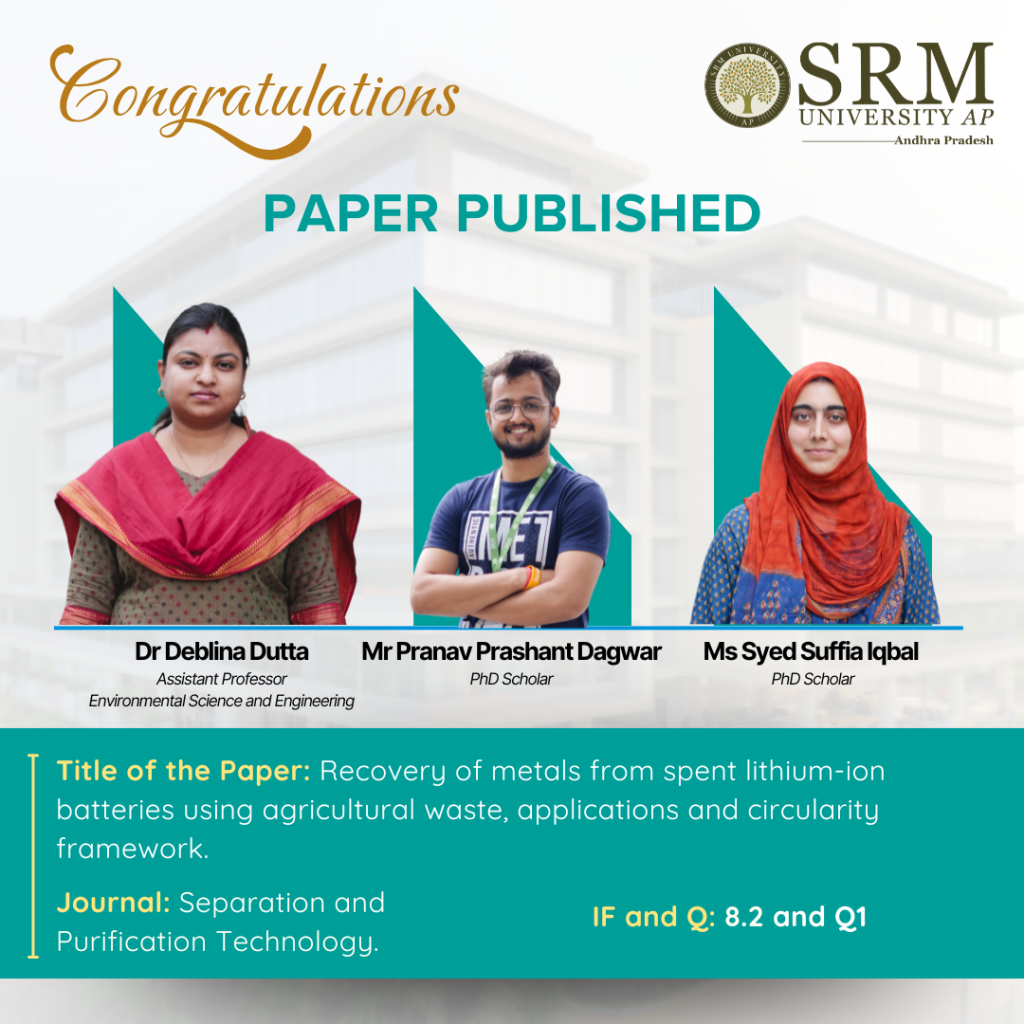
What happens when you can use natural waste like orange peels and rice husks to extract valuable metals from old batteries, electric vehicles, etc.? Exploring innovative and eco-friendly methods to recover useful metals, Dr Deblina Dutta, Assistant Professor, Department of Environmental Science and Engineering, and her research scholars, Ms Syed Suffia Iqbal and Mr Pranav Prashant Dagwar, have published a paper titled “Recovery of metals from spent lithium-ion batteries using agricultural waste, applications and circularity framework” in the prestigious Q1 journal Separation and Purification Technology having an impact factor of 8.2.
Abstract
This research explores an innovative, sustainable method to recover valuable metals (Li, Co, Ni, Mn) from spent lithium-ion batteries (LIBs) using agricultural waste such as rice husk, orange peels, tea waste, and sugarcane molasses. These organic wastes serve as eco-friendly, cost-effective leaching agents. The study compares conventional and biomass-based recovery methods, evaluates environmental impacts, and aligns the approach with circular economy principles to promote green technology and resource optimization.
Practical Implementation/ Social Implications of the Research
- Eco-friendly Recycling: Offers an alternative to hazardous chemical recycling by using biodegradable, non-toxic agricultural waste.
- Waste Valorisation: Transforms agricultural waste into a valuable resource, reducing landfill and open burning.
- Resource Recovery: Helps recover critical battery metals, reducing dependence on mining.
- Circular Economy: Supports sustainability goals by promoting a closed-loop recycling system.
- Policy Relevance: Aligns with SDGs such as clean energy (SDG 7), sustainable industries (SDG 9), and responsible consumption (SDG 12).
Collaborations
- Ain Shams University, Egypt
- Central Metallurgical R&D Institute (CMRDI), Egypt
Future Research Plans
- Scale up biomass-based metal recovery to pilot or industrial level.
- Develop hybrid leaching methods combining microbes and green solvents.
- Expand to rare earth element (REE) recovery from other waste streams.
Link to the article
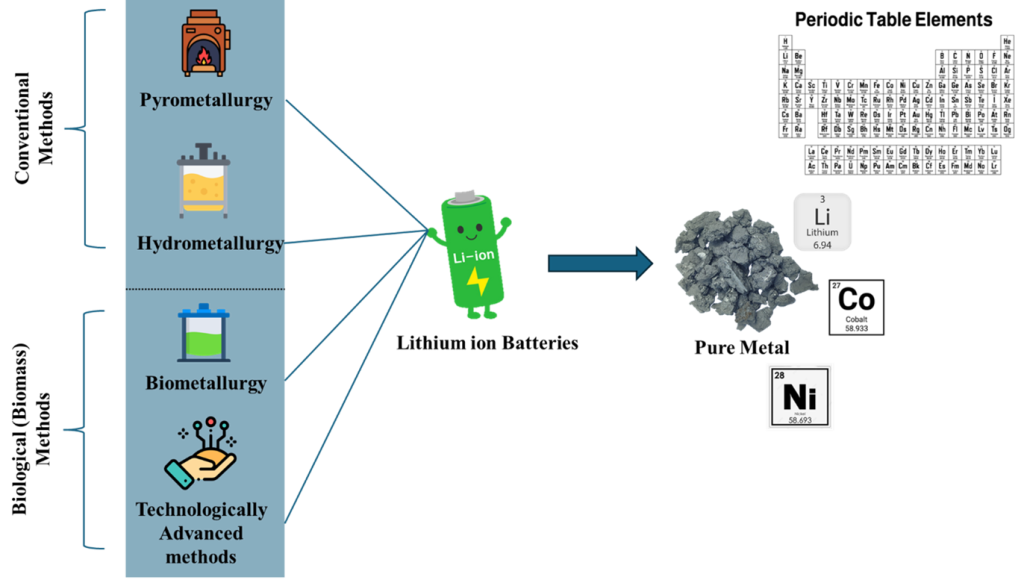
Fig. 2. Conventional and technologically advanced process for recycling LIBs.
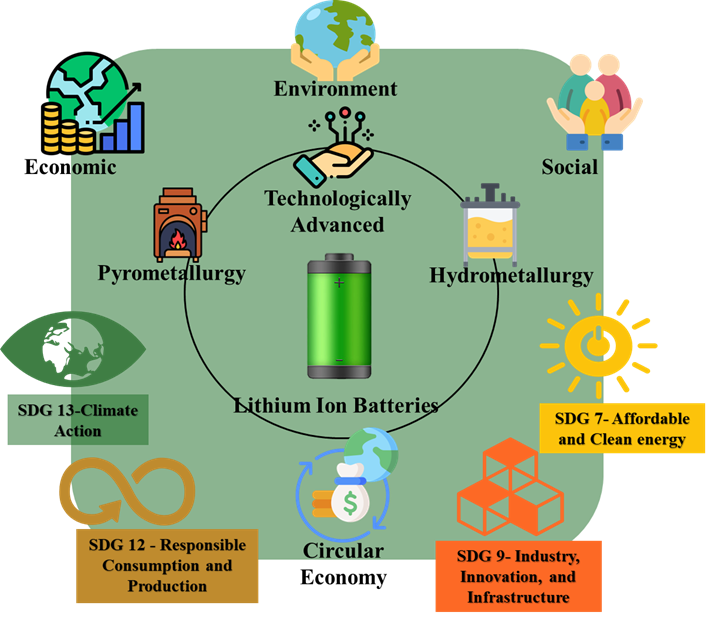
Fig. 9. Sustainability and circular economic applications in LIBs management.
- Published in Departmental News, ENVS News, News, Research News
A Novel Cooperative Spectrum Sensing Method Based on MASSFormer
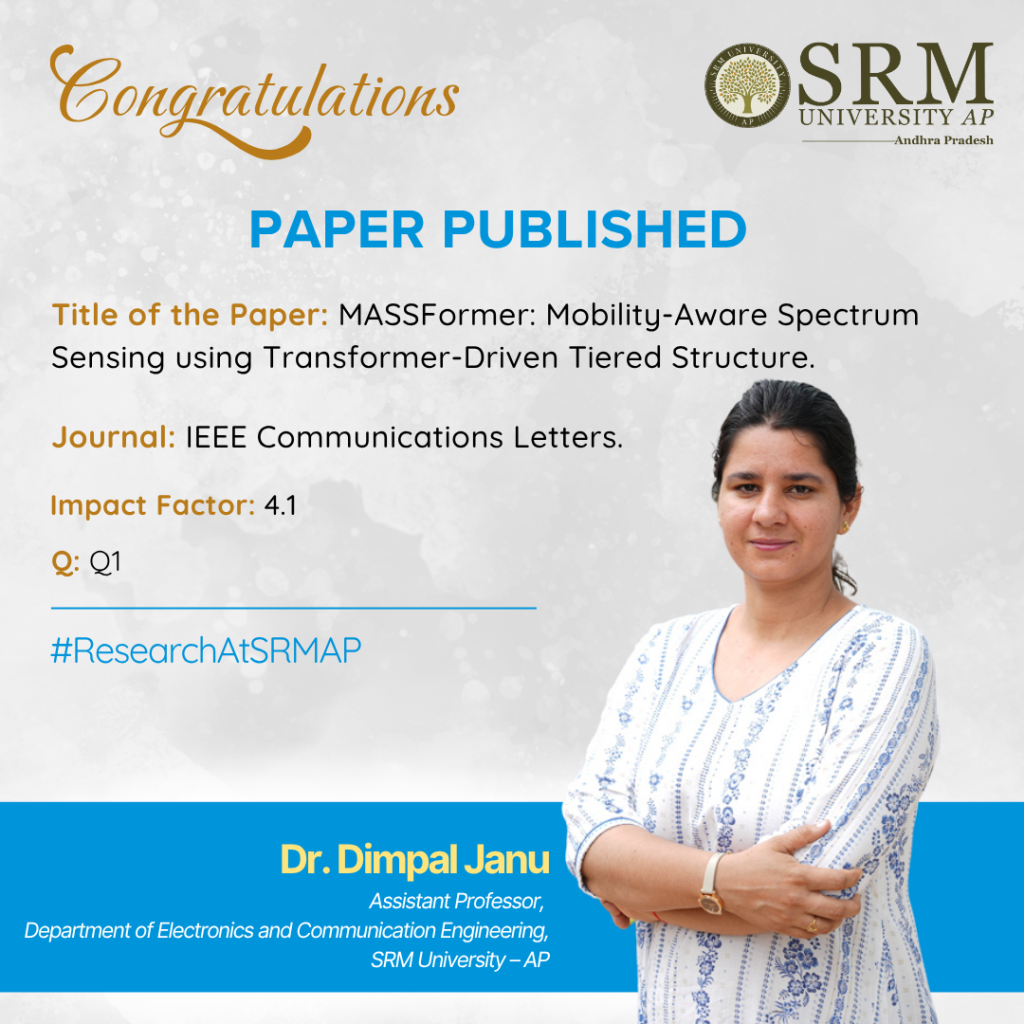
In the digital era, enhancing wireless connectivity is vital for systems’ accurate and efficient functioning. Working on a smart system to catalyse seamless wireless connectivity, Dr Dimpal Janu, Assistant Professor from the Department of Electronics and Communication Engineering, has published a paper “MASSFormer: Mobility-Aware Spectrum Sensing using Transformer-Driven Tiered Structure” in the Q1 journal IEEE Communications Letters. She has developed a novel cooperative spectrum sensing method based on MASSFormer that uses artificial intelligence, specifically a transformer model, to decide when to use a communication channel without causing interference.
Abstract
We develop a novel mobility-aware transformer-driven tiered structure (MASSFormer) based cooperative spectrum sensing method that effectively models the spatio-temporal dynamics of user movements. Unlike existing methods, our method considers a dynamic scenario involving mobile primary users (PUs) and secondary users (SUs) and addresses the complexities introduced by user mobility. The transformer architecture utilises an attention mechanism, allowing the proposed method to model the temporal dynamics of user mobility by effectively capturing long-range dependencies. The proposed method first computes tokens from the sequence of covariance matrices (CMs) for each SU. It processes them in parallel using the SU-transformer to learn the spatio-temporal features at the SU-level. Subsequently, the collaborative transformer learns the group-level PU state from all SU-level feature representations. The main goal of predicting the PU states at each SU-level and group-level is to improve detection performance even more. The proposed method is tested under imperfect reporting channel scenarios to show robustness. The efficacy of our method is validated with simulation results that demonstrate its higher performance compared to existing methods in terms of detection probability Pd, sensing error, and classification accuracy (CA).
Practical Implementation of Research
Smart cities & IoT Networks:
- MASSFormer enables intelligent spectrum sharing among a multitude of IoT devices in urban environments.
- It improves communication reliability in crowded and mobile settings, such as vehicular networks, smart traffic systems, or surveillance setups.
Social Implications of Research
MASSFormer is built to handle the mobility of users, which is essential in rural, remote, or developing areas where users often access the internet via mobile networks rather than fixed infrastructure. By enabling more efficient use of existing spectrum, the method helps extend internet access to remote and underserved regions, supporting education, healthcare, and economic development.
Future Research Plans
- Planning to develop hybrid models that blend classical detection with neural inference for improved interpretability and reliability.
- Use of federated learning so that SUs can collaboratively train models without sharing raw data.
Link to the article
- Published in Departmental News, ECE NEWS, News, Research News
Digestate Valorisation through Green Chemistry Technology
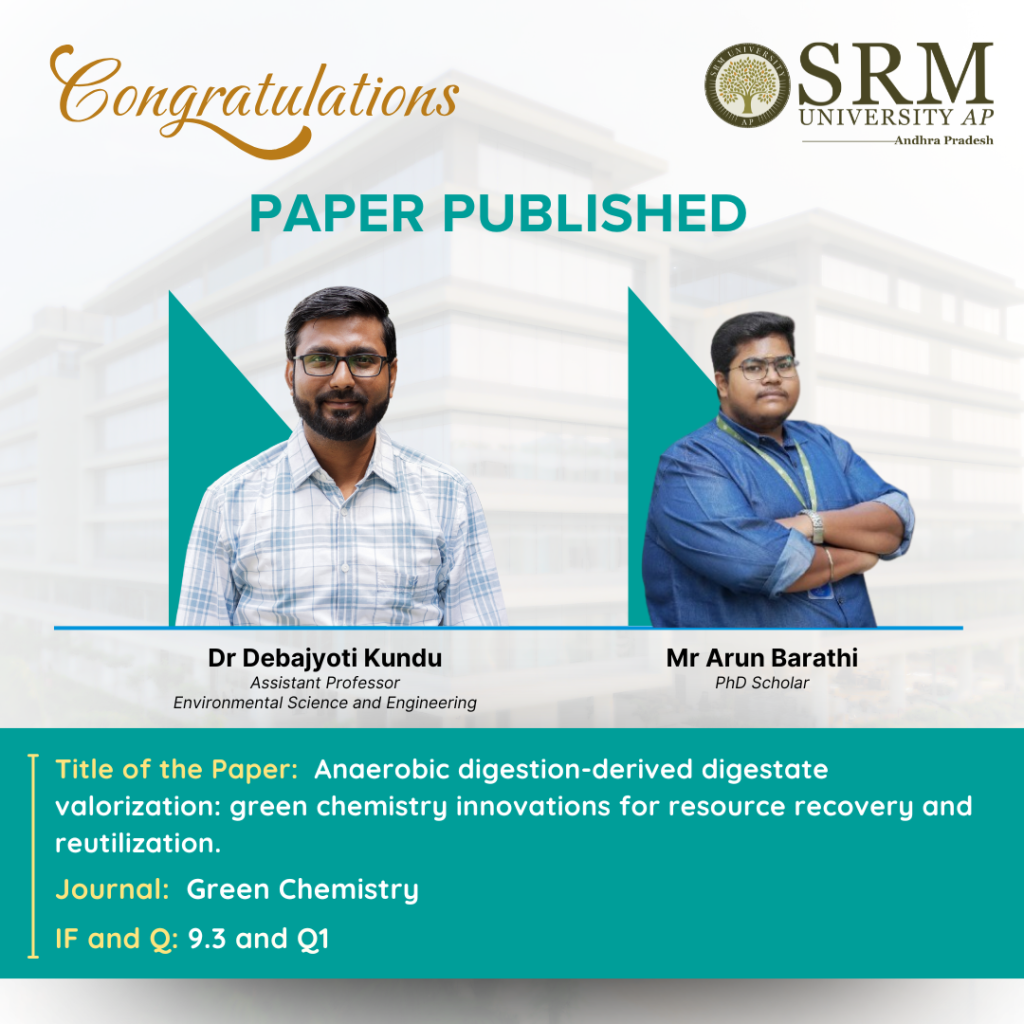
The proactive approach of Green Chemistry is driven by the cardinal rule of prevention rather than remediation of pollution. Analysing various eco-friendly ways to reduce waste, improve recycling, and help industries and farmers benefit from organic waste, Dr Debajyoti Kundu, Assistant Professor from the Department of Environmental Science and Engineering and his scholar Mr Arun Bharati, has published a paper titled “Anaerobic digestion-derived digestate valorization: Green chemistry innovations for resource recovery and reutilization”, in the Q1 journal Green Chemistry having an impact factor of 9.3.
Their research looked into eco-friendly ways to turn the bi-product of anaerobic digestion – digestate into valuable products like organic fertilisers, chemicals, and even ingredients for making plastics. The team also explores how to recover nutrients like nitrogen and phosphorus from it.
Abstract
Anaerobic digestion (AD) is a sustainable technology that converts organic waste into biogas, producing digestate as a by-product. This review investigates innovative strategies for digestate valorization through green chemistry approaches, emphasising its transformation into valuable resources such as biochar, bio-based polymers, and high-value chemicals like volatile fatty acids and humic substances. Additionally, the study explores nutrient recovery techniques like ammonia stripping and struvite precipitation. Through techno-economic and life cycle assessment perspectives, the work promotes digestate reutilization within a circular bioeconomy to enhance environmental sustainability and support net-zero goals.
Practical Implementation/ Social Implications of the Research
The research offers practical solutions for managing the large volumes of digestate generated in biogas plants. By converting digestate into biofertilisers, biochar, and industrial chemicals, we reduce the environmental burden of waste disposal and create economic opportunities for rural and urban stakeholders. These innovations support sustainable agriculture, reduce reliance on synthetic fertilisers, and promote clean technology, aligning with national and global sustainability goals, including SDGs and the circular economy.
Collaborations
The study was collaborative between SRM University–AP, SRMIST, Vignan’s Foundation, University of North Bengal, University of Burdwan, CSIR–NEERI, Thapar Institute, and Virginia Tech (USA).
Future Research Plans
The research lab focuses on the eco-friendly valorization of diverse organic wastes using green chemistry and sustainable bioprocessing approaches. We aim to develop scalable technologies for producing high-value biochemicals, enzymes, and biomaterials. These efforts are aligned with key UN SDGs.
Link to the article
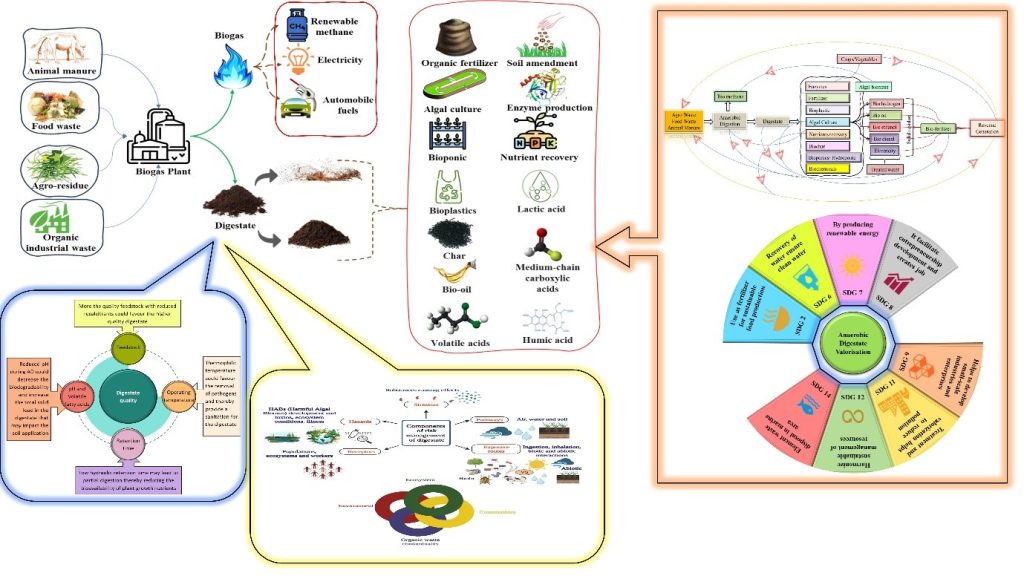
- Published in Departmental News, ENVS News, News, Research News
Microplastics: Hidden Drivers of Antimicrobial Resistance in Aquatic Systems
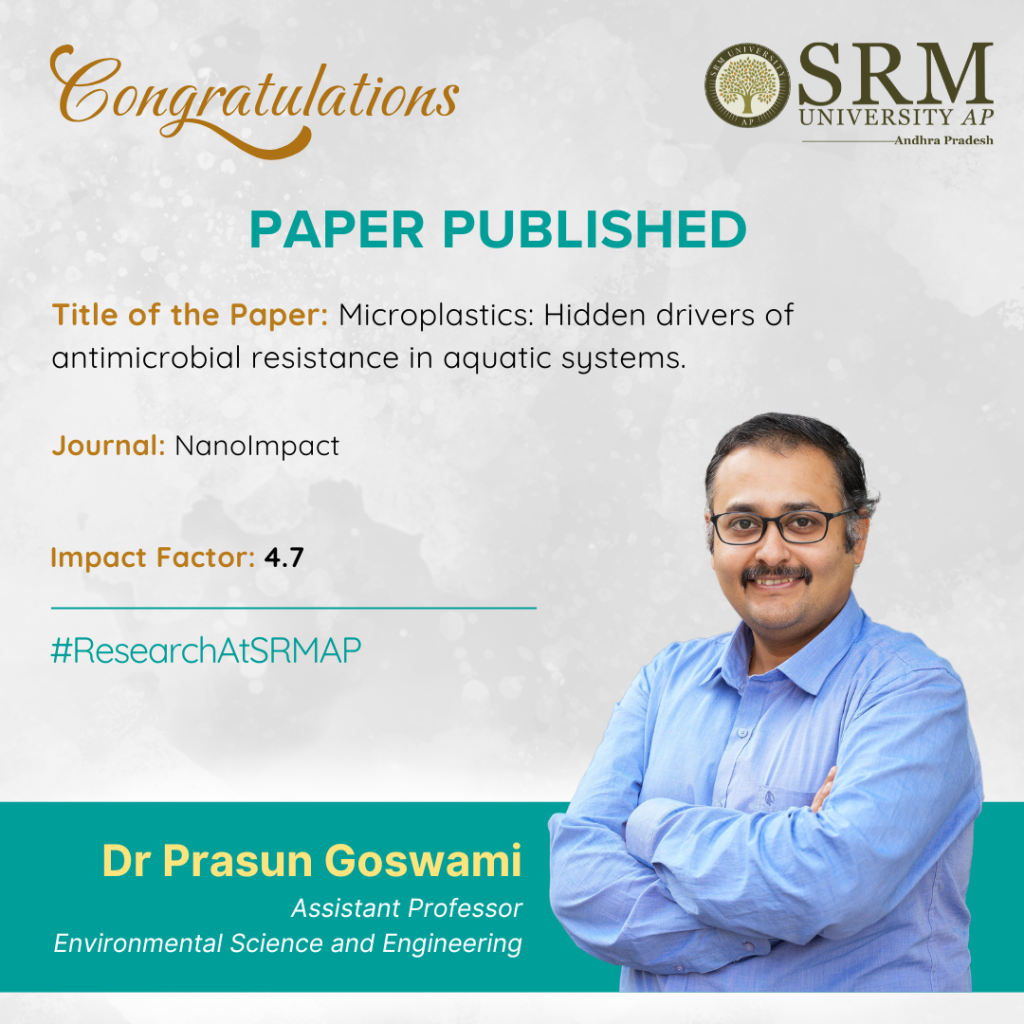
Dr Prasun Goswami, Assistant Professor from the Department of Environmental Science and Engineering, published a paper titled “Microplastics: Hidden drivers of antimicrobial resistance in aquatic systems”, in the Q1 journal, NanoImpact. His research reveals a concerning connection between microplastics and antimicrobial resistance in oceans. The study uncovers how microplastics in our oceans can harbour antibiotic-resistant pathogens, posing significant threats to marine ecosystems and human health. The paper not only sheds light on the topic but also proposes essential steps to better understand and manage the emerging threat.
Abstract
Tiny plastic particles, called microplastics, are commonly found in oceans, rivers, and lakes. These particles quickly gather layers of bacteria and other microbes, forming what scientists call the “plastisphere.” This plastisphere can carry harmful bacteria, including those that are resistant to antibiotics. Together, these plastic-based communities and the genes they carry make up what’s now being called the “Plastiome.” This review looks at how microplastics interact with bacteria and antibiotic resistance in water environments. It highlights how these plastics can collect and spread dangerous germs and genes that make infections harder to treat. The result is a growing health risk not just for marine life, but also for people. The review also points out areas where more research is needed and suggests ways to better understand and manage the spread of antibiotic resistance through plastic pollution in water.
Practical Implementation/ Social Implications of the Research
Understanding the Plastiome—the microbial life thriving on microplastics—is not just a scientific curiosity; it has real-world consequences. As these plastic particles travel through our oceans, they act as floating hubs for antibiotic-resistant bacteria, which can potentially enter the food chain via seafood or contaminate drinking water sources. The research highlights the urgent need for improved waste management, plastic use reduction, and policy frameworks to monitor microplastic pollution and its microbial cargo. By identifying how microplastics help spread antimicrobial resistance (AMR), the study can help inform public health strategies, guide marine conservation policies, and support international efforts to tackle both plastic pollution and the growing AMR crisis. In essence, tackling the Plastiome is not just about saving the oceans; it’s about protecting ecosystems, public health, and the future.
Collaborations
This work was conducted in collaboration with the National Institute of Animal Health, National Agriculture and Food Research Organization (NIAH-NARO), Tsukuba, Japan.
Future Research Plans
As part of the ongoing research, Dr Prasun explores how different plastic polymers interact with microbial communities and antibiotic resistance (AMR) genes in aquatic environments. Not all plastics behave the same—some may provide a more favourable surface for harmful microbes or facilitate the spread of resistance genes more efficiently. By understanding these polymer-specific interactions, he aims to identify which types of plastics pose the greatest environmental and public health risks. This research has important implications for designing safer materials, guiding environmental regulations, and developing strategies to curb the spread of AMR through plastic pollution in marine and freshwater ecosystems.</p
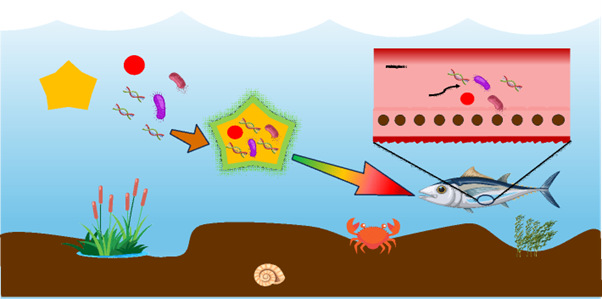
- Published in Departmental News, ENVS News, News, Research News


